

Italian luxury stories
Creativity
Text and interviews
Printing
Valeria Poletti
Giulia Maffeis
Valeria Poletti
Giulia Maffeis
Intese Grafiche (Bs)
L’Eleganza della Sottrazione The Elegance of Quiet Luxury
Esiste un lusso che non ha bisogno di fare rumore. È un’eleganza che si svela nel silenzio, nel tempo paziente dell’attesa, nel gesto misurato dell’artigiano. L’edizione 2025–26 di GH Luxury Magazine esplora questa dimensione: il lusso come sottrazione. Un’arte tutta italiana, quella di togliere il superfluo per rivelare l’essenza.
Lo ritroviamo nell’eleganza discreta di un comportamento che si fa notare senza ostentazione, e in un giardino che dialoga con il paesaggio nel rispetto del suo equilibrio. È un viaggio nel valore del tempo: quello necessario ai maestri di Murano per trasformare la sabbia in luce, e quello che si deposita nell’oro dei gioielli sardi, facendo di un oggetto un’eredità da tramandare.
Questa stessa eleganza si riflette nel rispetto profondo per i luoghi. La “Costa Smeralda” è nata ascoltando la voce della natura, non imponendosi su di essa. Così anche l’alta cucina che raccontiamo eleva la tradizione, partendo dalla purezza della materia prima e fondendo memoria e innovazione.
Il vertice di questa raffinatezza è l’invisibile: un profumo che diventa architettura dell’anima, un rito quotidiano come il caffè, un gesto gentile che definisce il vero Bon Ton.
È un lusso che si intreccia con l’esistenza, trasformandola. Le pagine che seguono vi invitano a riconoscere questo filo d’oro che unisce storie, luoghi e saperi. Un percorso attraverso un’Italia che non ostenta, ma rivela. Perché il lusso più autentico non è ciò che si possiede, ma ciò che si riconosce.
Benvenuti nel cuore silenzioso dello stile italiano.
Understated Luxury is loud. Its elegance reveals itself in silence, in the patient time of waiting, in the accurate gesture of the craftsman. The 202526 edition of GH Luxury Magazine explores this dimension: Italian understated luxury focusing on removingthesuperfluoustorevealtheessence.
Wecanfinditinthediscreeteleganceofbehaviours that stand out without ostentation, or in a garden that dialogues with the landscape while respecting surroundingharmony.Likeajourneytounderstand the true value of time: necessary for the masters of Muranototransformsandintolight,andnecessary for Sardinian gold jewellery crafting, time that makesobjectsapreciouslegacy.
This same elegance is reflected in a deep respect for nature. “Costa Smeralda” project, for example, was created with great attention to the local nature characteristics, aiming not to prevail on it. Just like thehautecuisinewefeature,whichelevatestradition through the purity of raw ingredients, in a continual dialoguebetweenmemoryandinnovation.
At the summit of this refinement lies the invisible: a perfume that becomes architecture for the soul, a daily ritual like coffee, a kind gesture that defines true Bon Ton.
Thisisaluxurywovenintolifeitself—transformative. The following pages invite you to trace this golden thread connecting stories, places, and traditions. A journey through an Italy that does not flaunt, but reveals. Because the truest luxury is not what you own—butwhatyourecognize.
WelcometothesilentheartofItalianstyle.

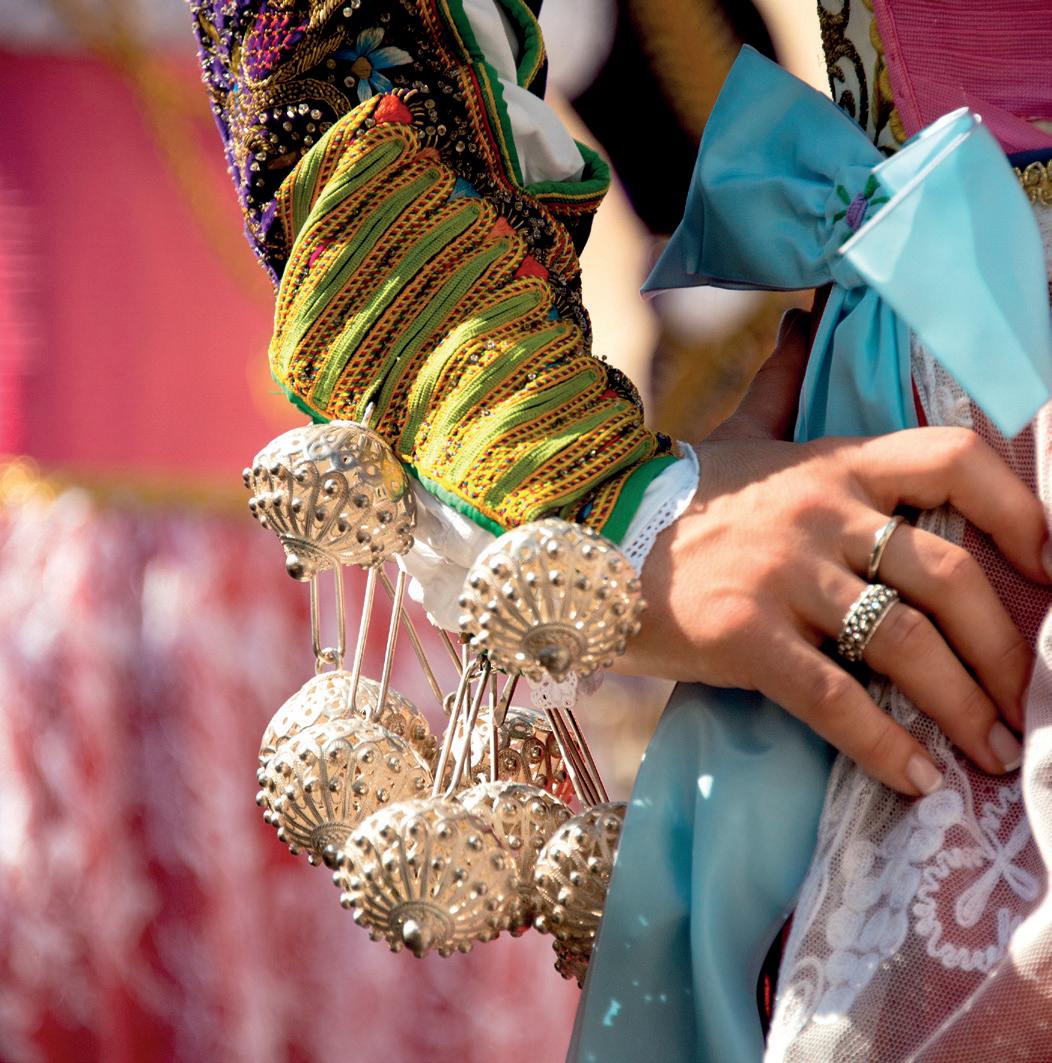


04
Sorsi d’Italia
Il Caffè tra Bellezza, Memoria e Futuro CoffeebetweenBeauty,Memory, and the Future
12
Il Sussurro del Granito e Smeraldo
L’Eredità Visionaria dell’Aga Khan in Sardegna TheAgaKhan’sVisionaryLegacyinSardinia
20
Bon Ton Moderno
L’Eleganza Gentile che resiste al Tempo (e ai touch screen) TheGentleElegancethatOutlastsTime (andTouchscreens)
26
Landscaping Lake Como
Il Giardino Segreto del Lario: dove Paesaggio, Design E Anima si incontrano The Secret Garden of Lake Como: whereLandscape,Design,andSoulmeet
33
Fili d’Oro e Sussurri Ancestrali
L’Eterna Alchimia dell’Oreficeria Sarda nel Lusso Contemporaneo TheEternalAlchemyofSardinian GoldsmithinginContemporaryLuxury

64
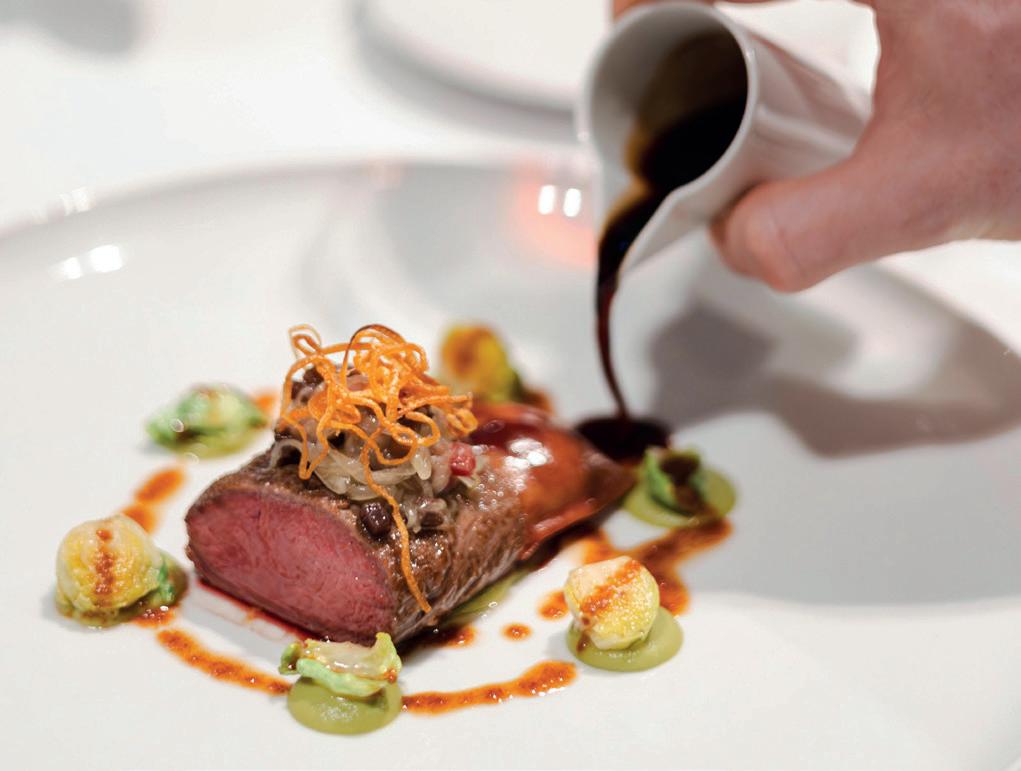
48
38
Murano
Dove il Fuoco plasma la Luce e la Storia diventa Arte Eterna WhereFireshapesLightandHistory becomes Eternal Art
48
Garda d’Autore: Un Viaggio nel Gusto
I Tesori Culinari del Lago di Garda, dall’Eredità Autentica all’Eccellenza Contemporanea TheCulinaryTreasuresofLakeGarda,from AuthenticHeritagetoContemporaryExcellence
56
L’Anima Invisibile del Lusso
Un Viaggio alle Radici del Profumo, nel Cuore dell’Arte Profumiera Italiana AJourneytotheRootsofFragrance, throughtheHeartofItalianPerfumery
64
Geometrie di Silenzio
L’Arte Alchemica del Metodo Classico in Franciacorta The Alchemical Art of the Classic Method in Franciacorta
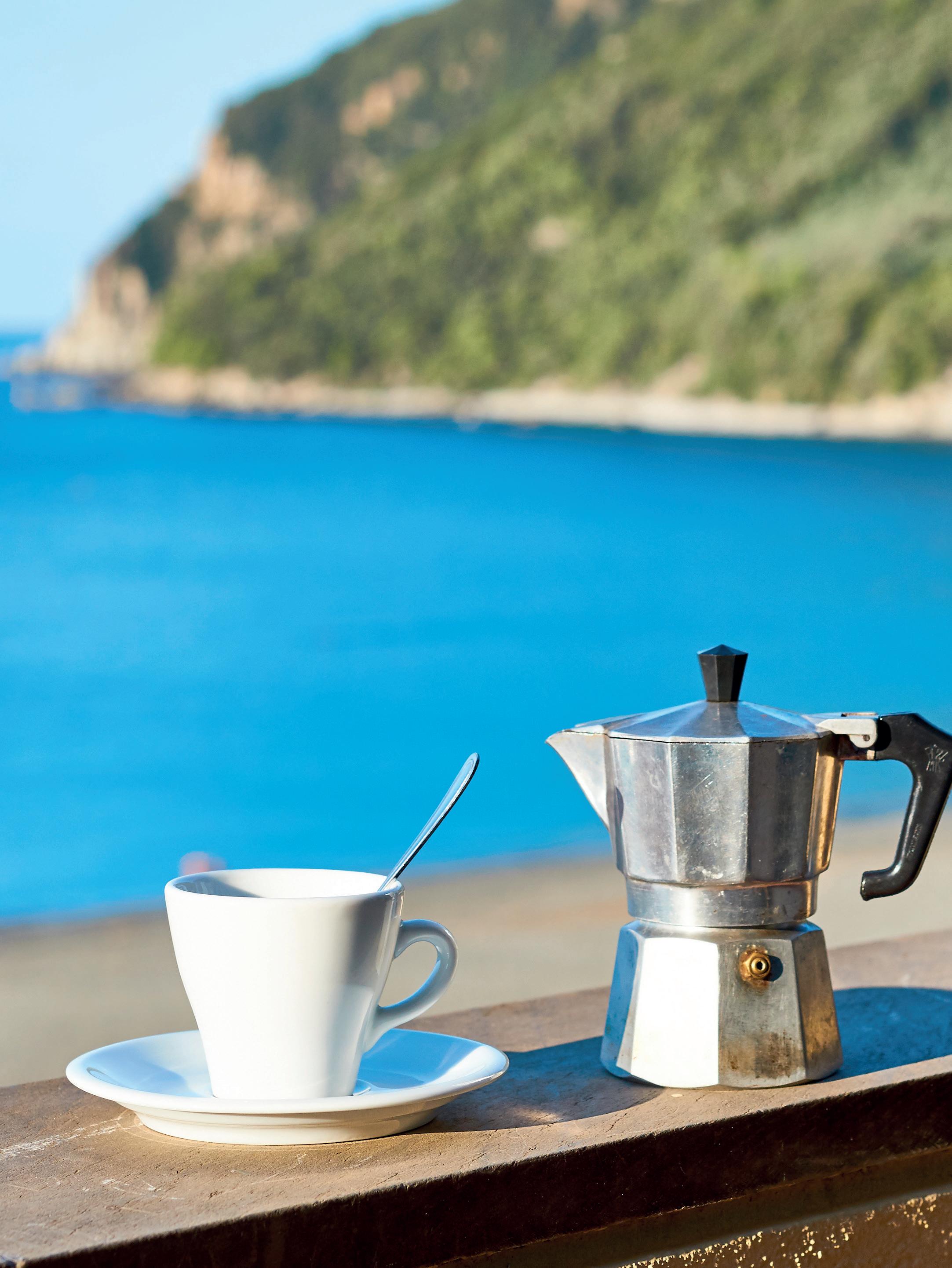
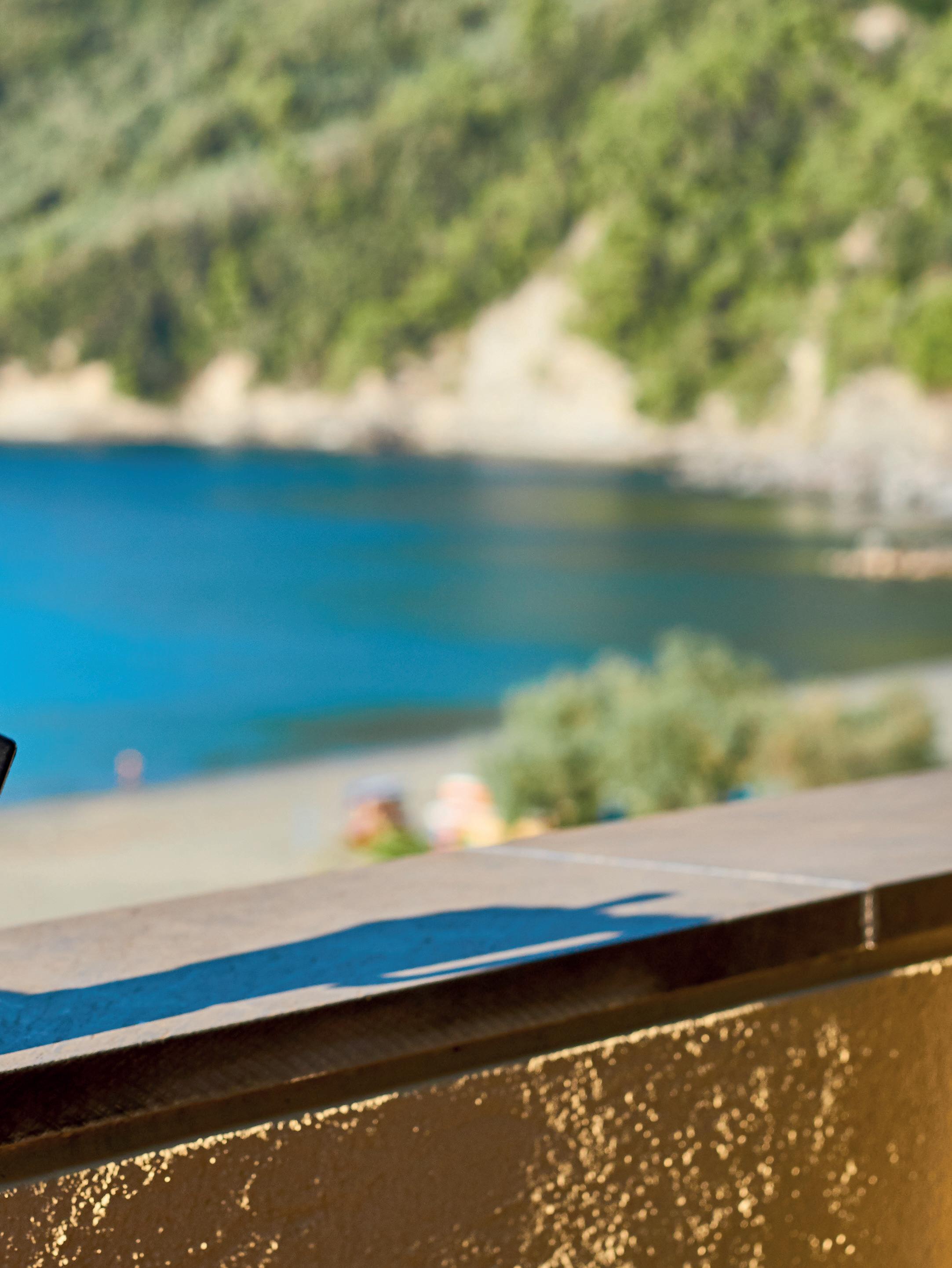
Sorsi d’Italia
Il Caffè tra Bellezza, Memoria e Futuro
SipsofItaly:CoffeebetweenBeauty, Memory,andtheFuture
Il rito del caffè in Italia è un gesto che attraversa generazioni, luoghi e momenti della giornata. Inizia con un profumo inconfondibile che si leva dai vicoli all’alba, il mormorio intimo di una moka sul fornello e una tazzina fumante che scalda le mani e lo spirito.
Nel nostro Paese il caffè è un rito ancestrale, un pilastro culturale, un linguaggio universale che scandisce il tempo e alimenta i legami. Questo filo aromatico intreccia storia, tradizioni familiari e il piacere quotidiano di milioni di persone, trasformando un umile seme in un’esperienza umana condivisa.
La storia d’amore tra l’Italia e il caffè iniziò ufficialmente nel XVII secolo a Venezia, cuore pulsante dei commerci marittimi. Il caffè arrivò dall’Oriente, avvolto da un’aura esotica, inizialmente venduto nelle farmacie come rimedio costoso e quasi miracoloso. Leggenda vuole che il caffè rischiò di essere bandito come la “bevanda del diavolo”, finché Papa Clemente VIII, incuriosito, ne chiese un assaggio. Incantato dal suo aroma, si narra che abbia esclamato: “Questa bevanda di
The ritual of coffee in Italy is a gesture that spans generations,places,andtimesofday.Itbeginswith an unmistakable scent rising through alleyways at dawn, the intimate murmur of a moka pot on the stove, and a steaming cup that warms both hands andspirit.
Inourcountry,coffeeisanancestralritual,acultural cornerstone, a universal language that marks time and fuels connection. This aromatic thread weaves together history, family traditions, and the daily pleasure of millions, transforming a humble bean intoasharedhumanexperience.
The love affair between Italy and coffee officially began in the 17th century in Venice, the beating heart of maritime trade. Coffee arrived from the East, shrouded in exoticism, initially sold in apothecaries as an expensive, almost miraculous remedy.
Legend has it that coffee was once at risk of being banned as the “devil’s drink,” until Pope Clement VIII, intrigued, requested a taste. Enchanted by its
In Italia il caffè è molto più di una bevanda:
è un rito ancestrale, un pilastro della cultura...

InItaly,coffeeismuchmorethanjustadrink: itisanancestralritual,apillarofculture...

Satana è così deliziosa che sarebbe un peccato lasciarla gustare solo agli infedeli. Battezziamola e rendiamola veramente cristiana!”. Che sia aneddoto o verità, questo racconto simboleggia la calorosa accoglienza dell’Italia verso quello che sarebbe presto diventato un caposaldo culturale.
Ben presto, le prime “botteghe del caffè” sorsero come centri di vita sociale e intellettuale. Tra queste, il Caffè Florian di Venezia, inaugurato nel 1720, rimane il più antico caffè d’Italia e un tesoro nazionale. Con i suoi interni sfarzosi e una clientela leggendaria che includeva Casanova, Goldoni, Byron e Stendhal, il Florian incarna la grandezza e la convivialità della cultura del caffè. L’Antico Caffè Greco di Roma, fondato nel 1760, ospitò Goethe, Schopenhauer e D’Annunzio, mentre il Gran Caffè Gambrinus di Napoli — con i suoi splendidi interni intrisi di eleganza Belle Époque — accolse reali, politici e poeti.
Mentre i caffè storici diventavano i salotti della vita pubblica, la dimensione più intima del caffè italiano si viveva — e si vive ancora — in casa. Qui, il protagonista indiscusso è la Moka, ideata da Alfonso Bialetti nel 1933. Questa ingegnosa caffettiera ottagonale in alluminio è diventata un’icona del design mondiale. Semplice ma rivoluzionaria, portò l’essenza dell’espresso in ogni casa. La sua forma, pressoché immutata, è esposta nei musei di tutto il mondo come testimonianza di
aroma, he is said to have exclaimed: “This Satan’s drink is so delicious that it would be a shame to let only infidels enjoy it. Let us baptize it and make it truly Christian!” Whether anecdote or truth, this tale symbolizes Italy’s warm embrace of what wouldsoonbecomeaculturalmainstay.
Soon, the first coffee houses—“botteghe del caffè”—emerged as hubs of social and intellectual life. Among them, Venice’s Caffè Florian, opened in 1720, remains Italy’s oldest coffee house and a national treasure. With opulent interiors and a storied clientele including Casanova, Goldoni, Byron, and Stendhal, the Florian epitomizes the grandeur and conviviality of coffee culture. Rome’s Antico Caffè Greco, founded in 1760, hosted Goethe, Schopenhauer, and D’Annunzio, while Naples’ Gran Caffè Gambrinus—its splendid interiors steeped in Belle Époque elegance— welcomedroyalty,politicians,andpoetsalike.
While historical cafés became salons of public life, the most intimate dimension of Italian coffee was— and still is—lived at home. Here, the undisputed protagonist is the Moka pot, designed by Alfonso Bialetti in 1933. This ingenious octagonal coffee maker in aluminum became a global design icon. Simple yet revolutionary, it brought the essence of espresso to every household. Its form, virtually unchanged, is displayed in museums worldwide as a testament to functional perfection. Every
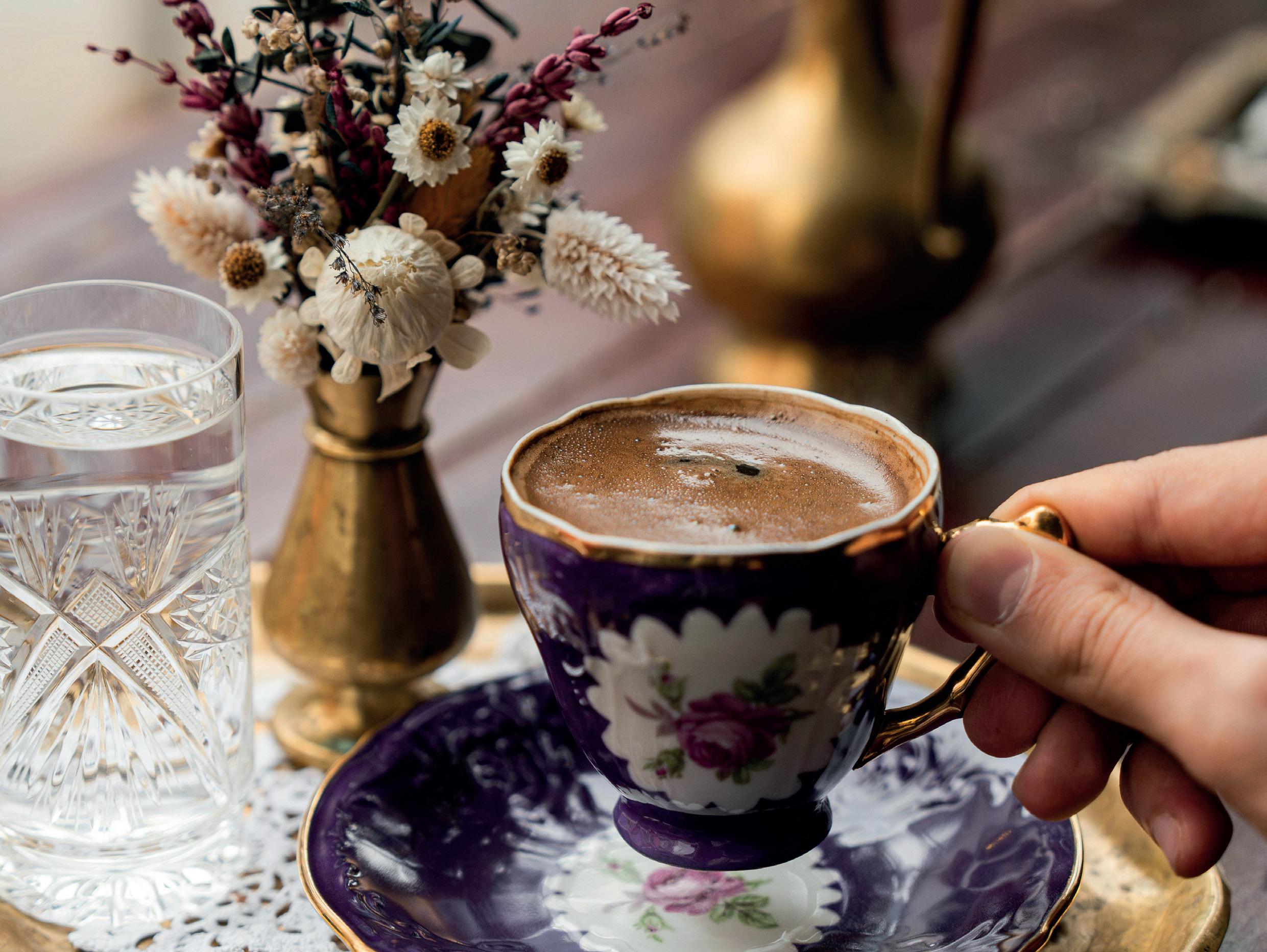
perfezione funzionale. Ogni famiglia italiana ha i suoi segreti: l’acqua giusta, la macinatura precisa (mai troppo fine!), il dibattito se pressare o meno la polvere, la fiamma tenuta bassa per consentire un’estrazione lenta e saporita. Quel dolce borbottio è una melodia mattutina, una promessa di calore, lucidità e presenza prima che la giornata inizi. Molti ricordi d’infanzia sono intrisi di quel profumo: delle nonne che preparavano il caffè per tutta la famiglia, di un semplice gesto quotidiano carico di cura.
Accanto a questo rito domestico, fiorì la cultura del bar all’italiana, una vera e propria istituzione. Con l’avvento delle macchine a pressione all’inizio del XX secolo, il caffè fuori casa divenne un piacere rapido e concentrato. L’espresso — con la sua crema color nocciola e la sua intensità compatta — simboleggia una pausa dinamica, spesso consumata in piedi al bancone. Il bar è un palcoscenico della vita di tutti i giorni, animato da conversazioni veloci, dal fruscio dei giornali e dalla coreografia del barista che calibra macchina e miscela. A Napoli, questa cultura ha dato vita alla toccante e generosa tradizione del “caffè sospeso”: pagare un caffè in più per chi ne ha bisogno, un gesto silenzioso di solidarietà.
Ma l’esperienza del caffè va oltre l’aroma e il gusto: vive attraverso gli oggetti che la accompagnano.
Italian family has its own secrets: the right water, the precise grind (never too fine!), the debate over whethertotampthegroundsornot,theflamekept low to allow a slow, flavorful extraction.
That gentle bubbling sound is a morning melody, a promise of warmth, clarity, and presence before the day unfolds. Many childhood memories are steeped in that scent—of grandmothers brewing coffee for the whole family, of a simple daily act imbued with care.
AlongsidethisdomesticritualflourishedtheItalian espresso bar culture—a true institution. With the advent of pressure machines in the early 20th century, coffee outside the home became a swift, concentrated pleasure. The espresso—with its hazelnutcremaandcompactintensity—symbolizes a dynamic pause, often enjoyed standing at the counter. The bar is a stage of everyday life, filled with quick conversations, newspaper rustling, and the barista’s choreography as they calibrate machineandblend.InNaples,thisculturegaverise tothepoignantandgeneroustraditionofthe“caffè sospeso”—paying for an extra coffee for someone inneed,asilentgestureofsolidarity.
But the experience of coffee goes beyond aroma and taste—it lives through the objects that
Il design di tazzine e servizi gioca un ruolo fondamentale nell’elevare il rito. La tradizione ceramica italiana offre sia una raffinatezza senza tempo sia una giocosa reinvenzione. La porcellana di Richard Ginori, con la sua pregiata manifattura e i motivi bordati d’oro, trasforma la tazzina da caffè in una miniatura d’arte, un simbolo discreto di lusso intellettuale. Allo stesso tempo, marchi contemporanei come Bitossi Home reinterpretano il rito con colori vivaci e forme audaci e stravaganti, celebrando la convivialità con uno spirito moderno e dimostrando che anche il quotidiano può essere un’espressione di design e personalità.
Pur essendo radicata nella tradizione, la cultura del caffè italiano abbraccia il futuro. Accanto ai metodi di preparazione classici, prendono forma tecniche di estrazione innovative. Le aziende italiane guidano questa evoluzione combinando l’eccellenza del prodotto con valori più profondi di sostenibilità, etica e design.
Un esempio è Lavazza, lo storico marchio torinese che da oltre un secolo porta il nome del caffè italiano nel mondo. Con un approccio lungimirante, Lavazza ha dimostrato che la forza industriale può
accompany it. The design of cups and services plays a vital role in elevating the ritual. Italian ceramic tradition offers both timeless refinement and playful reinvention. The porcelain of Richard Ginori, with its fine craftsmanship and gold-lined motifs,transformstheespressocupintoaminiature workofart—adiscreetsymbolofintellectualluxury. Meanwhile, contemporary brands like Bitossi Home reinterpret the ritual with vibrant colors and bold,whimsicalforms,celebratingconvivialitywith a modern spirit and proving that even the everyday canbeanexpressionofdesignandpersonality. While rooted in tradition, Italian coffee culture embracesthefuture.Alongsideclassicpreparation methods,innovativebrewingtechniquesaretaking shape. Italian companies are leading this evolution by combining product excellence with deeper valuesofsustainability,ethics,anddesign.
One such example is Lavazza, the historic Turinbased brand that has carried the name of Italian coffee across the globe for over a century. With a forward-thinkingapproach,Lavazzahasshownthat industrial strength can coexist with environmental and social consciousness—supporting farming communities and promoting far-reaching cultural
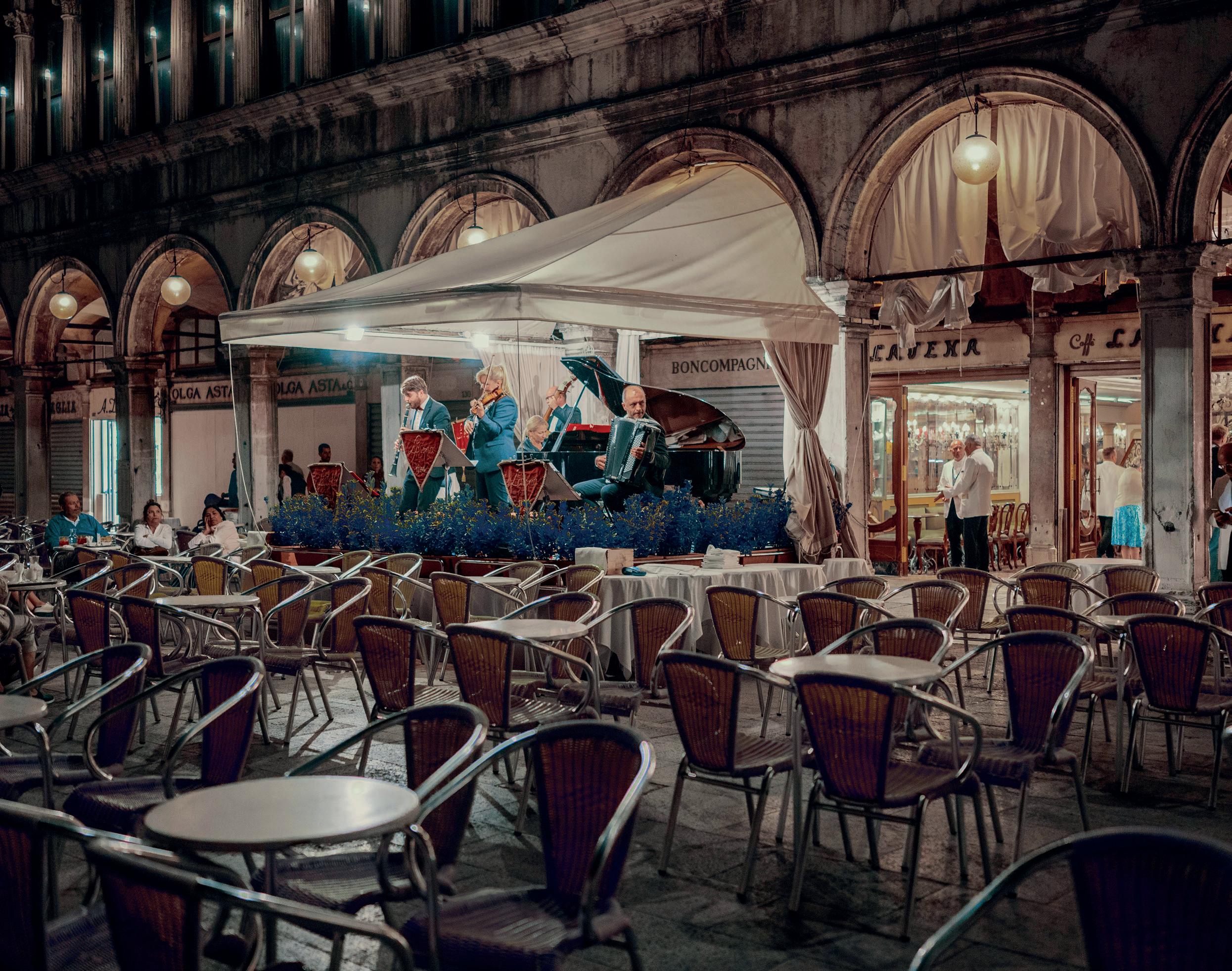
coesistere con la coscienza ambientale e sociale, sostenendo le comunità agricole e promuovendo progetti culturali di ampio respiro. La loro continua ricerca dell’innovazione risplende in progetti come Tablì: non un semplice nuovo sistema di preparazione, ma un manifesto di gusto, design e sostenibilità contemporanei.
Dimenticate la capsula. Al cuore di Tablì c’è una compressa di puro caffè, compatta e priva di involucro: un’innovazione minimalista e sostenibile che cattura l’anima della miscela. Questo cambiamento radicale unisce stile e sostanza, rispondendo alle esigenze di un pubblico esigente per cui bellezza ed etica devono andare di pari passo. La macchina abbinata, elegante nella forma e nella funzione, trasforma questa compressa in una raffinata esperienza sensoriale. Il suo lancio durante la Milano Design Week ha consacrato Tablì come una nuova icona per chi cerca bellezza e performance in ogni dettaglio della vita quotidiana.
In definitiva, in Italia il caffè trascende la sua forma liquida. È un codice culturale, un rito confortante, una gratificazione condivisa. Ti dà il benvenuto sulla soglia di casa, è il calore dell’ospitalità, il piccolo lusso che dà inizio — o riscatta — una giornata. Dalla moka che borbotta sul fornello all’espresso sorseggiato velocemente al bar, dai caffè storici alle esperienze contemporanee d’avanguardia, ogni tazzina racconta una storia. Una storia di memoria, bellezza e passione, distillata in un unico, perfetto sorso.
projects.Theirongoingpursuitofinnovationshines in projects like Tablì: not simply a new brewing system, but a manifesto of contemporary taste, design,andsustainability.
Forget the capsule. At the heart of Tablì lies a compact, unwrapped tablet of pure coffee—a minimalist and sustainable innovation that captures the soul of the blend. This radical shift aligns style with substance, answering the needs of a discerning audience for whom beauty and ethics must walk hand in hand. The accompanying machine, elegant in form and function, transforms this tablet into a refined sensorial experience. Its launch during Milan Design Week confirmed Tablì as a new icon for those who seek beauty and performanceineverydetailofdailylife.
Intheend,coffeeinItalytranscendsitsliquidform. It is a cultural code, a comforting ritual, a shared indulgence. It welcomes you at the doorstep, it is the warmth of hospitality, the little luxury that begins—or redeems—a day. From the Moka bubbling on the stove to the espresso swiftly sipped at the bar, from storied cafés to cuttingedge contemporary experiences, every cup tells a story. A tale of memory, beauty, and passion— distilledintoasingle,perfectsip.

Splendida villa di design con vista lago
Gorgeous designer villa with lake view



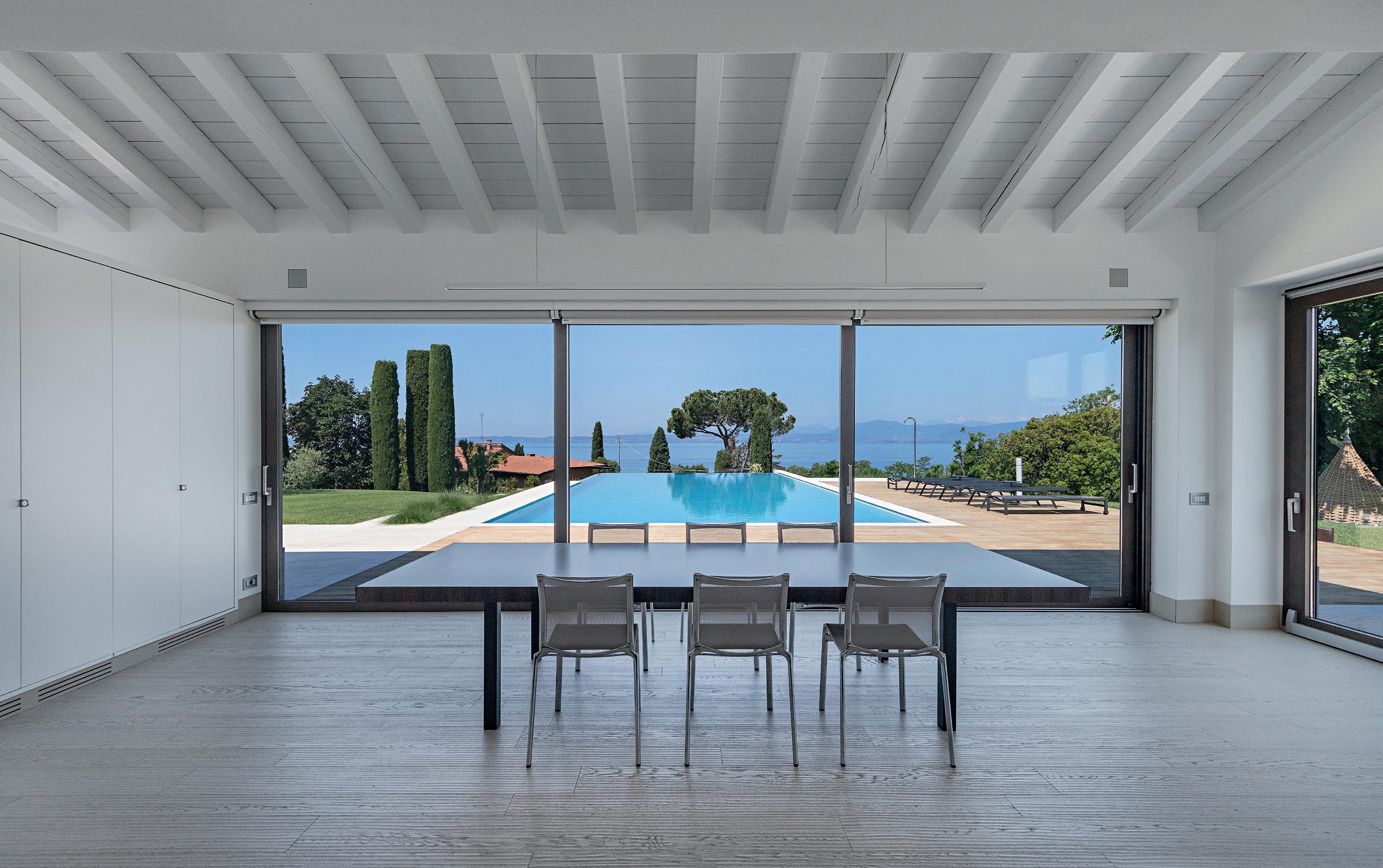


Il Sussurro del Granito e Smeraldo
L’Eredità Visionaria dell’Aga Khan in Sardegna
Il Sussurro del Granito e Smeraldo

C’è un punto, lungo la costa nord-orientale della Sardegna, dove il granito millenario scivola verso un mare che riflette le sfumature più pure dello smeraldo. In quest’angolo silenzioso della Gallura, il vento trasporta l’aroma di mirto e elicriso, e l’unico suono è il dialogo sommesso tra le onde e le rocce. È qui che nasce la Costa Smeralda, sinonimo di eleganza discreta e bellezza senza tempo—un luogo che non è stato semplicemente costruito, ma immaginato.
Oltre sessant’anni fa, fu la visione di un giovane principe, Karim Aga Khan IV, a trasformare questa costa selvaggia in un’icona globale. Non fu un progetto immobiliare, ma un atto di sensibilità profonda verso il paesaggio e l’anima del luogo. Quando, nei primi anni Sessanta, l’Aga Khan approdò su queste rive incontaminate, non vide solo un litorale disabitato, ma un potenziale ancora intatto: creare un rifugio esclusivo, in armonia con la natura, anziché dominarla.
Nel 1962 fondò il Consorzio Costa Smeralda e affidò la sua visione a una generazione di architetti illuminati—Jacques Couëlle, Luigi Vietti, Michele Busiri Vici—che seppero ascoltare il genius loci. Le forme architettoniche si fusero con il paesaggio: volumi bassi, curve organiche, materiali locali come granito e legno, colori rubati alla terra e al
AlongSardinia’snortheasterncoast,wheretimeworn granite tumbles gently into a sea of rarest emerald, theairisperfumedwithwildmyrtleandhelichrysum. Silencereigns—brokenonlybythehushofwavesor thecryofadistantgull.ThisistheheartoftheCosta Smeralda, a name that conjures visions of rarefied beauty, understated elegance, and a dream made tangible. A dream born more than sixty years ago fromthevisionofayoungprince:KarimAgaKhanIV.
Speaking of the Aga Khan and Sardinia today is not merely recounting a story of bold investments, but also reflecting on how visions can shape a place— while preserving its soul. When Prince Aga Khan arrived on this unspoiled stretch of coastline in the early 1960s, he saw more than empty shores. He perceived potential: the opportunity to create an exclusive sanctuary in harmony with nature, not in conflict with it.
Hisinitiativehasneverbeenjustarealestateventure. It was an act of cultural and landscape sensitivity. The Costa Smeralda Consortium, founded in 1962, became the guardian of this vision. He entrusted it to enlightened architects—Jacques Couëlle, Luigi Vietti, Michele Busiri Vici—who gave form to the land’sspirit.Theirworkembracedorganicformsand localmaterials:lowbuildingsthatechoedthecurves of wind-sculpted rock, colors drawn from lichen
lichene. Porto Cervo, con la sua Piazzetta discreta, le boutique mimetizzate e gli alberghi-icona come il Cala di Volpe o il Pitrizza, divenne l’epitome di un lusso sussurrato, mai esibito.
Ma ciò che l’Aga Khan ha donato alla Sardegna è un concetto di esclusività ben più profondo: il lusso del tempo, della bellezza rispettata, della privacy autentica. Ha compreso che il vero privilegio non risiede nell’eccesso, ma nella qualità dell’esperienza, nella connessione con la storia e l’identità di un territorio. Così, la Costa Smeralda è divenuta meta di un jet set colto e raffinato, alla ricerca non solo di vacanza, ma di appartenenza.
La sua eredità non è un monumento al passato, ma un dialogo vivo tra visione e presente. Pur avendo conosciuto cambi di proprietà, il principio fondativo—la tutela del paesaggio e dell’autenticità—rimane intatto. Le attuali sfide della sostenibilità e del turismo consapevole non fanno che riaffermare i valori originari: il rispetto
and earth, and textures that felt native to the terrain. Porto Cervo, with its intimate Piazzetta, discreet boutiques, and legendary hotels such as Cala di Volpe and Pitrizza, came to define a whispered, neverostentatious,kindofluxury.
What the Aga Khan brought to this corner of Gallura was a redefinition of exclusivity—one that transcended material wealth. It was the luxury of time rediscovered, of privacy, of beauty that speaks softly yet lingers deeply. He seemed to know that trueluxuryisexperiential:aplacethatoffersnotonly comfort, but a sense of belonging, rooted in history andshapedbydeeprespectforitssurroundings.His visionattractedacultured,refinedinternationalelite, drawn not just to a destination but to a lifestyle—an effortless Mediterranean elegance imbued with authenticity.
The Aga Khan’s legacy is not frozen in the past. It continues as a living dialogue between its founding vision and the evolving needs of the present.

Sussurro del Granito e Smeraldo
per la terra, l’attenzione per le comunità, la bellezza come responsabilità.
L’impronta dell’Aga Khan si estende ben oltre la Costa Smeralda. Il suo impegno ha toccato l’artigianato locale, la formazione, la valorizzazione del patrimonio naturale e culturale. È la dimostrazione concreta di come un legame profondo con un territorio possa generare valore duraturo, oltre la logica dell’investimento.
Oggi, in un’epoca in cui il lusso si reinventa, la Costa Smeralda continua a rappresentare un unicum: non replicabile, non omologabile. È un esempio raro di come imprenditorialità e visione culturale possano convergere in un’opera viva, destinata a crescere e a significare nel tempo.
Il sussurro del granito e dello smeraldo non racconta solo di fasti e ospiti illustri, ma parla dell’incontro tra una terra antica e lo sguardo lungimirante di un uomo. Un incontro che ha generato un sogno concreto: un nuovo modo di vivere il Mediterraneo. Un’eredità che, come le pietre levigate dal tempo, acquista valore a ogni stagione che passa.
Ownership may have changed, but the spirit embedded in these stones and this landscape endures. Today’s renewed focus on sustainability, local heritage, and conscious travel echoes the originalvaluesofthatfirst,daringproject.
His commitment extended well beyond Costa Smeralda. From supporting local artisanship and education to championing environmental and culturalpreservation,hisapproachreflectedadeep, lasting bond with Sardinia. It is proof that a genuine relationship with a place can inspire long-term, meaningfulimpactfarbeyondeconomicreturn.
In such an age of homogenized luxury, the true value of Costa Smeralda lies in its peculiarity. It offers an experience that cannot be replicated—a rare convergence of entrepreneurial boldness and cultural reverence.
The whisper of granite and emerald tells not just of glamour or illustrious visitors. It speaks of an extraordinary encounter: between the ancient, untamed beauty of a land and the clarity of a man who saw its soul—and transformed it into a dream, crafted to endure. A legacy, like the stones shaped bytime,thatonlydeepensinmeaningastheseasons pass.
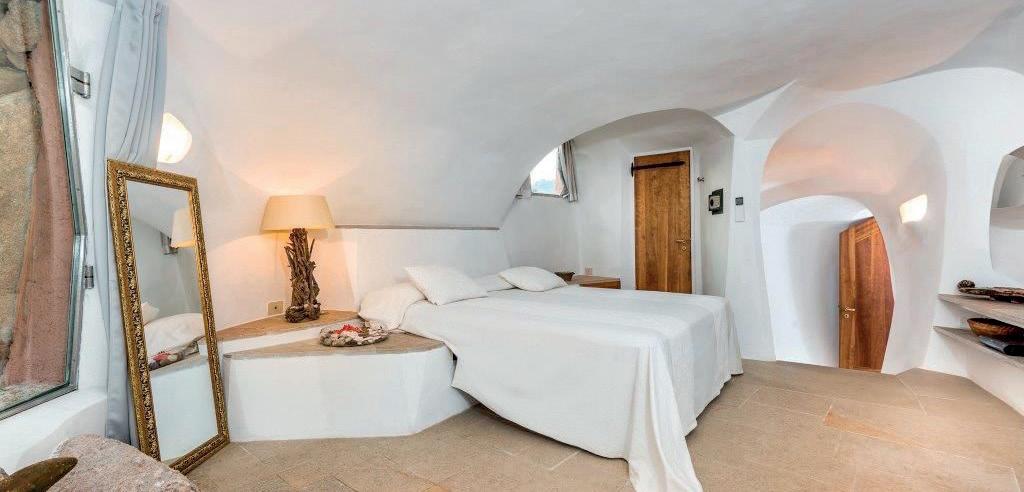

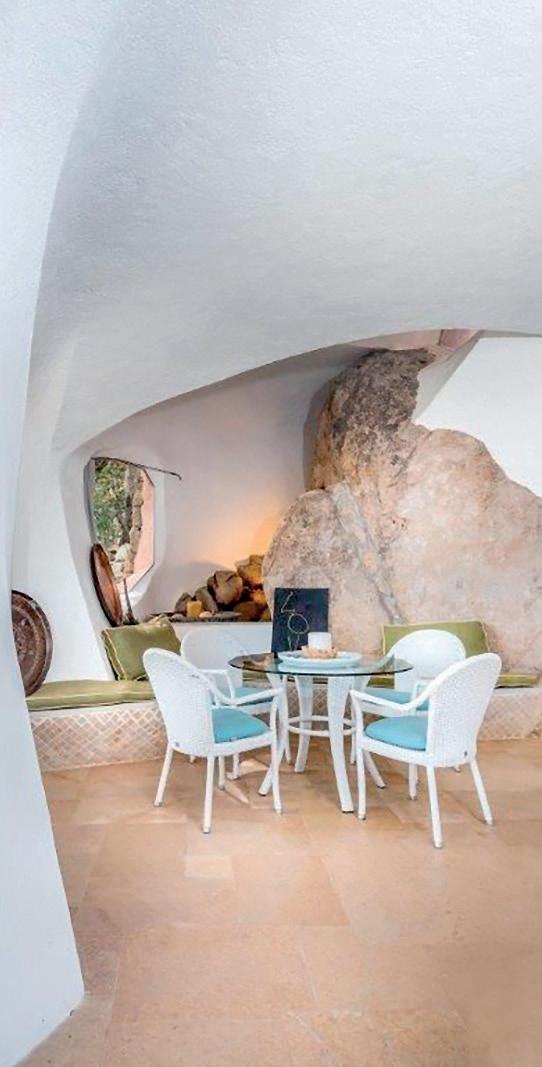

LaVilladi
JaquesCöuêlle
JaquesCöuêlle’sVilla

La villa si sviluppa con ampi spazi luminosi, caratterizzati da linee fluide e organiche che si integrano perfettamente nella natura circostante. La zona giorno, accogliente e luminosa, include un angolo cottura che si affaccia su un portico coperto e un incantevole giardino. Qui, gli ospiti possono godere di una vista spettacolare mentre si rilassano e si immergono nella bellezza del paesaggio sardo. La possibilità di realizzare una piscina aggiunge un tocco di lusso e comfort a questa oasi di tranquillità.
Nella zona notte, la villa offre ampi spazi dedicati al riposo e al relax. Una master bedroom con bagno e cabina armadio offre un ambiente di lusso senza compromessi, mentre una camera doppia aggiuntiva garantisce spazio e privacy per gli ospiti. Inoltre, il progetto in corso prevede ulteriori ampliamenti, inclusa la realizzazione di posti auto coperti per garantire praticità e sicurezza.
Ma ciò che rende davvero unica questa villa è la sua posizione privilegiata. Posizionata a breve distanza dalle rinomate spiagge della Costa Smeralda, i residenti di questa villa possono agevolmente esplorare le bellezze naturali della regione, mantenendo intatto il comfort e il lusso della vita moderna. Il centro pulsante di Porto Cervo, con le sue boutique di alta moda, i ristoranti esclusivi e la vivace marina, è facilmente accessibile dalla proprietà, offrendo un’esperienza senza pari nella celebre Costa Smeralda.
The villa is designed with large, bright rooms, characterized by flowing, organic lines that blend perfectly with the surrounding nature. The living area is cozy and bright, and includes a kitchenette that opens onto a covered porch and an enchanting garden. Here, guests can enjoy spectacular views whilerelaxingandimmersingthemselvesinthebeautyoftheSardinianlandscape.Thepossibilityofa swimmingpooladdsatouchofluxuryandcomfort tothisoasisoftranquility.
The sleeping area of the villa offers ample space for rest and relaxation. A master bedroom with en-suite bathroom and walk-in wardrobe offers an uncompromisingly luxurious ambience, while an additionaldoublebedroomprovidesspaceandprivacy for guests. The current project also includes further extensions, including covered parking for convenienceandsecurity.
But what makes this villa truly unique is its privileged location. Situated just a short distance from therenownedbeachesoftheCostaSmeralda,residents of this villa can easily explore the natural beauty of the region, whilst enjoying the comfort and luxuryofmodernliving.ThevibrantcenterofPorto Cervo, with its high fashion boutiques, exclusive restaurants and lively marina, is easily accessible from the property, offering an unparalleled experience in the famous Costa Smeralda.
Ref. PC6067



Prestigiosa villa vista
Pevero

GH LUXURY NEL MONDO
Luxury Real Estate & Italian Lifestyle
GH Luxury Estate sorge per soddisfare le richieste di un mercato globale ricercato e raffinato, offrendosi come emblema del prestigio italiano nel settore immobiliare a livello internazionale.
GH Luxury Estate arises to meet the demands of a sought-after and refined global market, offering itself as an emblem of Italian prestige in the real estate industry internationally.
PORTO CERVO
LAGO DI COMO
LAGO DI GARDA
LAGO DI ISEO/FRANCIACORTA
TOSCANA
TRENTO DUBAI
MIAMI

Bon Ton Moderno
L’Eleganza Gentile che resiste al Tempo (e ai Touch Screen)
C’è stato un tempo in cui l’etichetta era codificata in manuali rilegati, si imparava la disposizione delle posate come una formula, e si taceva con grazia davanti agli anziani. Era il bon ton dell’epoca Vittoriana, poi adattato con eleganza nel Dopoguerra da figure come Irene Brin – che, sotto lo pseudonimo di “Contessa Clara”, seppe reinterpretare con finezza tutta italiana l’arte del vivere bene. Per chi guardava agli Stati Uniti, la guida era Emily Post. Quei manuali, per decenni, hanno dettato le regole della buona educazione: dai ricevimenti alle lettere scritte a mano.
Oggi, nel 2025, mentre viviamo con calendari sincronizzati su più dispositivi, ordiniamo cene con un clic e lavoriamo da remoto con persone che forse non incontreremo mai di persona, il bon ton non è un relitto del passato. È semplicemente cambiato. È diventato più fluido, più intelligente, più attuale. E, forse, più necessario che mai.
A portarlo nel presente è una nuova generazione di ambasciatori del “saper vivere”. Tra questi spiccano Monica Lotti e Camilla Da Rocha, fondatrice di La Posh. Due voci diverse ma complementari, che

Once upon a time etiquette was spelled out in bound manuals, when the placement of cutlery was learned by heart, and silence in front of elders was a mark of grace. That was the bon ton of the Victorian era—later refined in postwar Italy by writers like Irene Brin, who, under the pen name “Contessa Clara,” masterfully redefined the art of fine living. Across the Atlantic, Emily Post served as the oracle of good manners. For decades, such guides shaped the social codes of salons, soirées, andhandwrittencorrespondence.
Today, in 2025, as we navigate schedules across multiple devices, order dinner in a tap, and work remotely with people we may never meet in person, etiquette is anything but outdated. It has evolved. Gained nuance. Been reimagined. And it has never been more essential.
Leadingitsrenaissanceisanewgenerationof“artof-living” ambassadors. Among them are Monica Lotti and Camilla Da Rocha, founder of La Posh two distinct yet complementary voices who are rewriting the rules of modern etiquette with style, wit, and substance.
stanno riscrivendo le regole del galateo con stile, ironia e molta sostanza.
Negli anni Sessanta, una telefonata dopo le 21 era maleducazione. Oggi, basta un messaggio vocale inviato senza preavviso o un commento sarcastico su WhatsApp per incrinare un’amicizia o compromettere un rapporto di lavoro. Il bon ton contemporaneo ha cambiato linguaggio, ma non principi: empatia, rispetto, gentilezza. E oggi si applica anche – e soprattutto – al comportamento digitale.
Monica Iotti lo dice chiaramente: “Il modo in cui ci muoviamo nel mondo digitale rivela quanto siamo educati davvero.”
Camilla Da Rocha, con tono pratico e ironico, traduce le regole del galateo nella vita quotidiana: dai consigli su come comportarsi a tavola a quelli per essere ospiti graditi. Racconta, con video e contenuti fruibili, come un gesto semplice –scegliere il giusto dono, accogliere con cura, ringraziare con autenticità – possa fare la differenza. Il suo stile è diretto, accessibile, mai antiquato.
Il nuovo galateo è inclusivo, trasversale, sostenibile. Non è più esclusiva di un’élite, ma uno strumento culturale alla portata di tutti. Oggi si parla di galateo interculturale – perché ogni gesto ha significati diversi a seconda del contesto – e di etichetta sostenibile, dove anche evitare sprechi o limitare l’uso dello smartphone durante un pasto condiviso diventa una forma di rispetto.
In the 1960s, a phone call after 9 p.m. was considered intrusive. Today, an unexpected voice message or a passive-aggressive text can strain friendships or professional ties. The language of etiquette has changed—but not its core values: empathy, consideration, kindness. And more than ever,itnowextendsintothedigitalrealm.
MonicaLottiputsitsuccinctly:“Thewaywemove through the digital world reveals how truly wellmannered we are.”
Camilla Da Rocha brings a light, practical tone. Through accessible videos and daily insights, she treats etiquette as something alive—something to be lived. She offers real-world advice on being a graciousguest,choosingtherightgift,settingthe table with care, and how small gestures can make a big difference. Her style is approachable and modern, translating classic rules into everyday relevance—never stiff, never outdated.
This new etiquette is inclusive, transversal, and sustainable. No longer reserved for the elite, it has become a democratic cultural tool. Today we speak of intercultural etiquette, where each gesture has unique meaning depending on the context.Wespeakofsustainableetiquette,where evenminimizingwasteorlimitingsmartphoneuse duringsharedmealsbecomesaformofrespect.


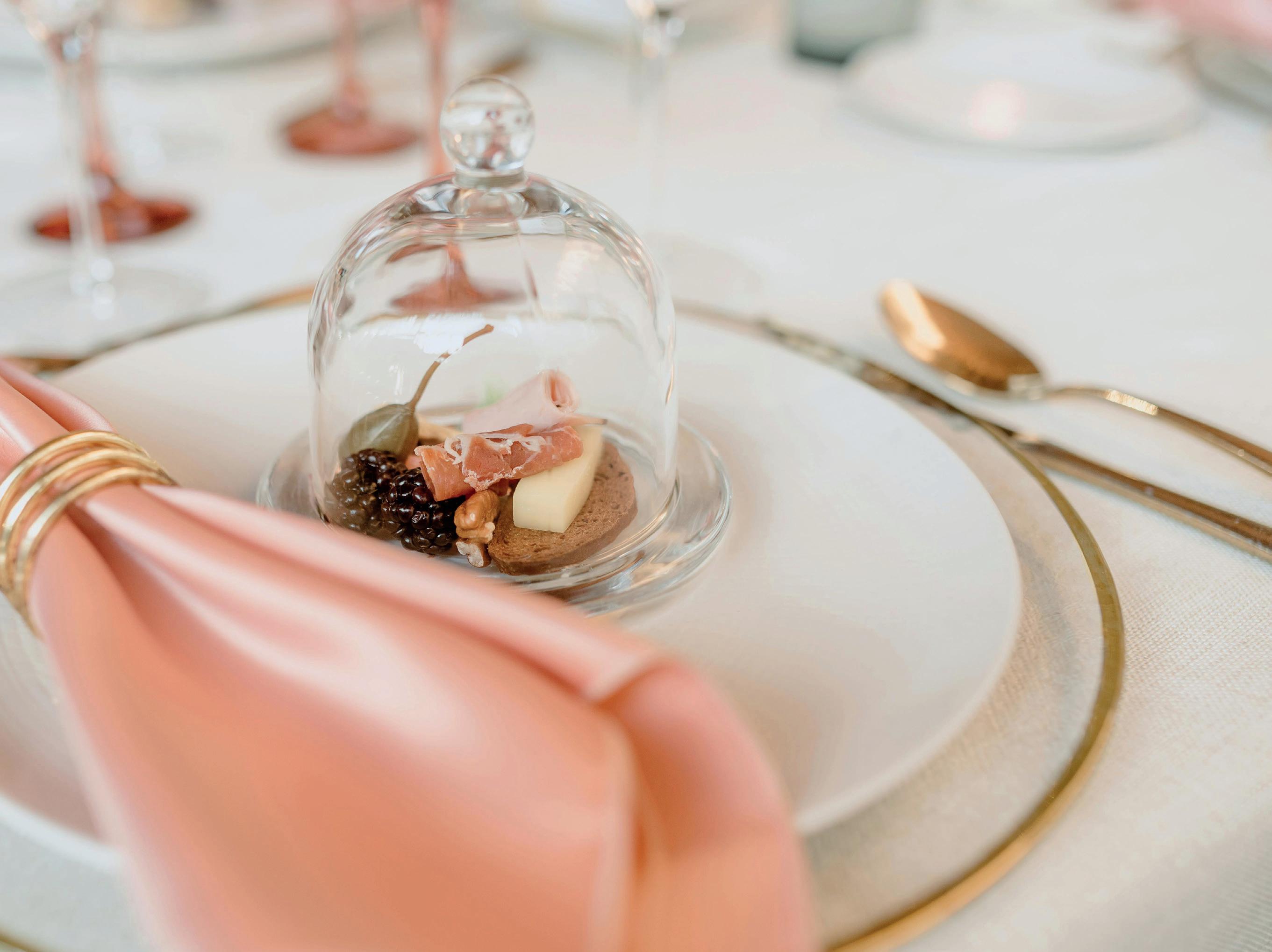
Camilla ne racconta il lato pratico; Monica, quello simbolico. Entrambe ci invitano a riscoprire il senso profondo della parola “educazione”, liberandola da ogni rigidità e restituendole il suo significato originario: attenzione verso gli altri.
Preparare con cura una tavola, scrivere un biglietto a mano, inviare un messaggio vocale sincero per dire “grazie”: il bon ton di oggi non serve a impressionare, ma a creare connessioni autentiche.
Nel mondo del lusso – e in particolare in quello immobiliare, dove il dettaglio è essenziale –conoscere le regole dell’accoglienza, del dialogo, dell’ascolto può cambiare la qualità di un incontro. Un gesto elegante è il primo biglietto da visita.
In un’epoca in cui tutto è esposto, la vera eleganza risiede nel comportamento. È il modo in cui si chiede scusa. È il silenzio nel momento opportuno. È scegliere di godersi un piatto invece di fotografarlo. È il rispetto per il tempo, per gli spazi, per le persone.
Camilla embodies the practical side; Monica highlights the symbolic. Together, they help us reconnect with the essence of the word “education”—stripped of rigidity, restored to its truemeaning:thoughtfulnesstowardothers.
Setting the table with intention, writing a note by hand, saying thank you with a sincere voice message—modern manners aren’t about impressing, but about cultivating genuine connection.
In the world of luxury—especially in high-end real estate, where detail shapes perception—knowing the language of hospitality, conversation, and presence can transform an encounter. A gracious gestureisthefinestbusinesscard.
In an era of constant display, true elegance lies in behavior. It’s in how we apologize. In knowing when to remain silent. In choosing to savor a meal rather than photograph it. In respecting time, people,andspace.
Il bon ton è diventato parte integrante di un nuovo concetto di lusso: consapevole, sostenibile, autentico. Non ha bisogno di loghi per farsi notare, ma è immediatamente riconoscibile. È la bellezza del gesto ben fatto, del pensiero che precede l’azione.
Come scriveva Baldassarre Castiglione nel Rinascimento: “La vera grazia è quella che si nasconde nella naturalezza.” E oggi, tra influencer e intelligenza artificiale, è proprio quella naturalezza consapevole a fare la differenza.
Il bon ton del 2025 è un ponte tra epoche, tra offline e online, tra formalità e spontaneità. Una forma d’arte che evolve, senza mai snaturarsi.
Se Monica Lotti è la sua voce elegante e riflessiva, Camilla Da Rocha ne rappresenta l’anima giocosa e ironica. Insieme, disegnano una nuova mappa della buona educazione, dove rispetto, leggerezza e senso dell’umano convivono con grazia.
Today, etiquette is a pillar of sustainable luxury. It doesn’t need logos to stand out—yet it’s unmistakable. It’s the beauty of a well-executed gesture,ofthoughtprecedingaction.
As Baldassare Castiglione wrote during the Renaissance: concealed by naturalness.” influencers and artificial intelligence, it is this consciousnaturalnessthatsetsusapart.
The bon ton of 2025 is a bridge between eras, betweenofflineandonline,betweenformalityand spontaneity. It is a living art—evolving, but never losingitssoul.
If Monica Lotti is its elegant, contemplative voice, Camilla Da Rocha is its playful, ironic spirit. Together, they sketch a new map of modern civility—where respect, humor, and humanity coexistwithgrace.
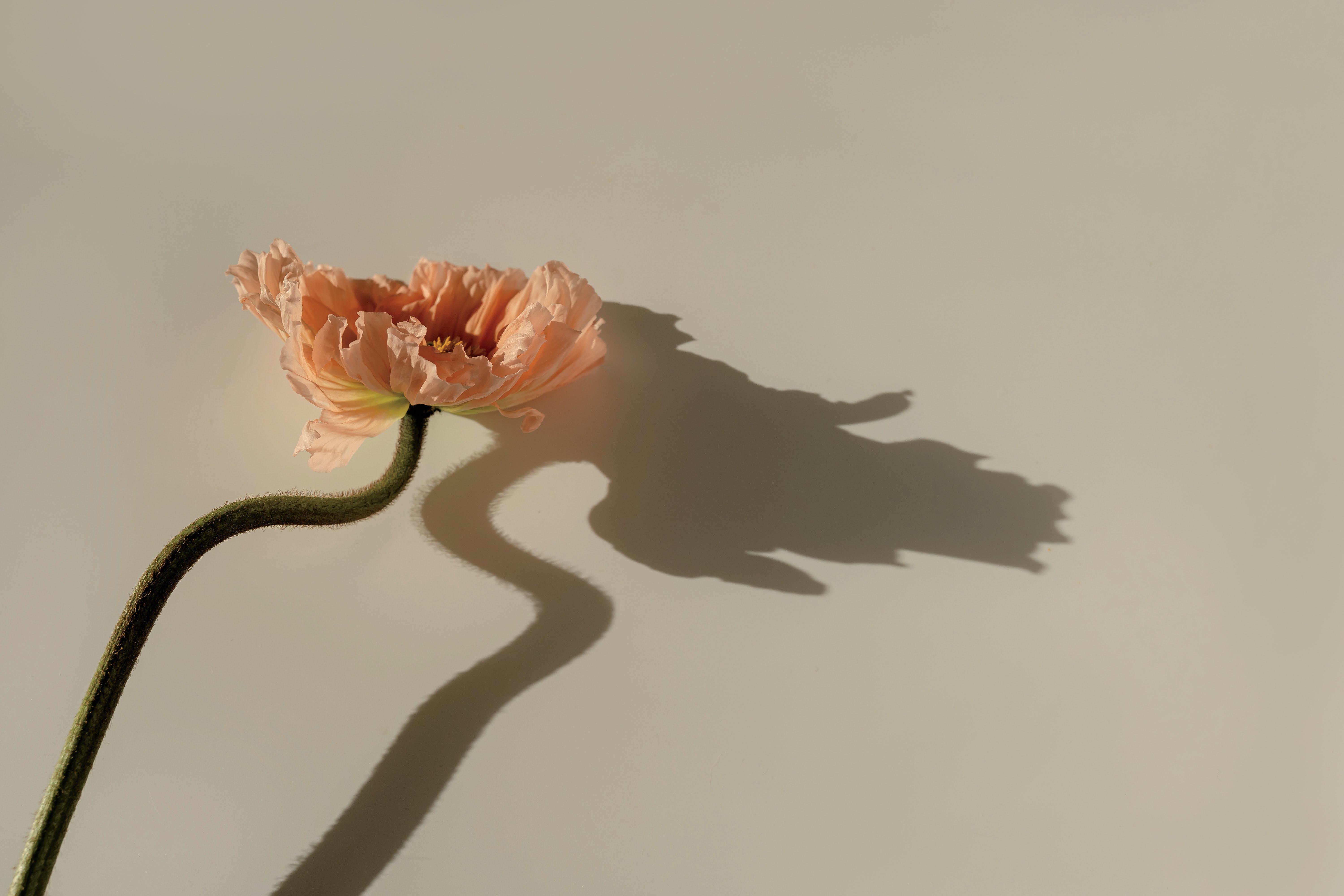


Dive into luxury stories


Landscaping Lake Como
Il Giardino Segreto del Lario: dove Paesaggio, Design e Anima si incontrano

Nel respiro argenteo del mattino, quando la bruma indugia sulle acque cobalto del Lago di Como, si svela uno spettacolo che trascende la semplice vista. È un dialogo silenzioso tra la maestosità della natura e l’ingegno umano, un’armonia scolpita nei secoli. Le pendici boscose si specchiano in un abbraccio liquido, mentre i giardini, come gemme preziose, punteggiano le rive, sussurrando storie di nobili fasti e visioni paesaggistiche audaci. Qui, il landscaping non è ornamento, ma arte viva, continua ricerca di equilibrio tra sublime e innovazione, nel profondo rispetto di un ecosistema magnifico e delicato. È un invito alla contemplazione, un’esperienza che tocca le corde intime, parlando al cuore di chi cerca la bellezza autentica, resistente al tempo.
La tradizione paesaggistica del Lago di Como affonda radici in un passato illustre. Fin dall’epoca romana, le sue sponde hanno attratto aristocratici e letterati, incantati dalla fusione di clima mite e scenari alpini. Con il Grand Tour, il Lario si consacra tappa imprescindibile. Le ville sontuose iniziarono a competere non solo in magnificenza architettonica, ma nello splendore dei loro giardini. Paesaggisti visionari plasmarono il territorio, creando prospettive scenografiche, introducendo specie esotiche accanto alla flora autoctona, disegnando percorsi di scoperta. Questo “saper fare” giardino, tramandato e reinterpretato, ha fondato una cultura del paesaggio che ancora oggi definisce l’identità del Lago di Como, dove il giardino è estensione dell’abitare e dialogo con la storia.
TheSecretGardenofLake Como:whereLandscape, Design,andSoulmeet
In the silvery breath of morning, when the mist lingers on the cobalt waters of Lake Como, a spectacle unfolds that transcends mere sight. It is a silent dialogue between the majesty of nature and human ingenuity, a harmony sculpted over centuries. The wooded slopes mirror themselves in a liquid embrace, while gardens, like precious gems, punctuate the shores, whispering tales of noble splendor and bold landscape visions. Here, landscaping is not mere ornamentation, but a livingart,acontinuouspursuitofbalancebetween the sublime and innovation, with deep respect for a magnificent and delicate ecosystem. It is an invitation to contemplation, an experience that touches the heartstrings, speaking to those who seekauthentic,timelessbeauty.
The landscape tradition of Lake Como is rooted in an illustrious past. From Roman times, its shores have attracted aristocrats and literati, enchanted by the fusion of mild climate and Alpine scenery. WiththeGrandTour,theLariobecameanessential stop. The opulent villas began to compete not only in architectural magnificence but also in the splendor of their gardens. Visionary landscapers shapedtheterritory,creatingscenicperspectives, introducing exotic species alongside native flora, and designing paths of discovery. This “garden know-how,” handed down and reinterpreted, established a landscape culture that still defines theidentityofLakeComotoday,wherethegarden is an extension of living and the opportunity to dialoguewithhistory.
Oggi, il landscaping sul Lago di Como vive una nuova stagione, coniugando eredità storica e innovazione sostenibile. Il design contemporaneo si inserisce con rispetto, valorizzando materiali locali – pietra di Fossena, Ceppo Lombardo – e cromie che riecheggiano i toni del lago e delle colline. Si mira a creare “sistemi viventi”, giardini capaci di evolvere in simbiosi con chi li abita e con l’ambiente.
L’innovazione si manifesta nella scelta di specie vegetali resilienti, adatte al microclima, con attenzione alla biodiversità e alla riduzione dell’impronta idrica. Tecnologie costruttive eco-compatibili, come irrigazione efficiente e illuminazione a basso consumo, sono prassi. Eventi come Orticolario e il Lake Como Design Festival testimoniano questa effervescenza, spesso ospitati in ville storiche, creando un ponte tra passato e futuro. Essi sottolineano come il design possa riflettere un mondo in trasformazione, dove la frammentazione diventa opportunità di ricostruzione. Questo approccio, che sposa bellezza, funzionalità e responsabilità, risuona con una clientela internazionale esigente, orientata verso un lusso consapevole che trova nel landscaping di pregio un elemento distintivo per le proprietà immobiliari di prestigio.
Today,landscapingonLakeComoisexperiencing a new season, combining historical heritage with sustainable innovation. Contemporary design integrates respectfully, emphasizing local materials—Fossenastone,CeppoLombardo—and colors that echo the tones of the lake and hills. The aim is to create “living systems,” gardens capable of evolving in symbiosis with their inhabitants and the environment.
Innovation manifests in the choice of resilient plant species, suitable for the microclimate, with attention to biodiversity and the reduction of the water footprint. Eco-compatible construction technologies, such as efficient irrigation and low-consumption lighting, are standard practice. EventslikeOrticolarioandtheLakeComoDesign Festivaltestifytothiseffervescence,oftenhosted in historic villas, creating a bridge between past and future. They highlight how design can reflect a transforming world, where fragmentation becomes an opportunity for reconstruction. This approach, which marries beauty, functionality, and responsibility, resonates with a demanding internationalclientele,orientedtowardsconscious luxury that finds in high-quality landscaping a distinguishing element for prestigious real estate properties.


Il Lago di Como è costellato di dimore storiche i cui giardini sono capolavori di arte paesaggistica, mete imperdibili.
• Villa Carlotta, a Tremezzina, è celebre per il suo straordinario giardino botanico. In primavera, rododendri e azalee (oltre 150 varietà) offrono uno spettacolo cromatico indimenticabile. Il giardino all’italiana coesiste con un giardino romantico, ricco di suggestioni.
• Villa del Balbianello, a Lenno, icona di bellezza romantica e location cinematografica (“Star Wars”, “Casino Royale”), vanta un giardino terrazzato con scorci mozzafiato, esempio mirabile di fusione tra architettura e paesaggio.
• I Giardini di Villa Melzi d’Eril, a Bellagio, sono uno dei più significativi esempi di giardino all’inglese. Voluti all’inizio dell’Ottocento, si estendono lungo la riva del lago, offrendo un percorso sereno tra alberi secolari, statue, un laghetto giapponese e una cappella.
• Villa Monastero, a Varenna, vanta un giardino che si estende per quasi due chilometri lungo la sponda, offrendo un percorso botanico e architettonico di grande fascino, con terrazzamenti e una ricca collezione di specie.
• Villa d’Este, a Cernobbio, oggi hotel di lusso, è circondata da un parco di 10 ettari, capolavoro del Rinascimento italiano, con il celebre Ninfeo, giochi d’acqua e prospettive scenografiche.
Lake Como is dotted with historic residences whose gardens aremasterpiecesoflandscapeart,unmissabledestinations.
• VillaCarlotta,inTremezzina,isfamousforitsextraordinary botanical garden. In spring, rhododendrons and azaleas (over 150 varieties) offer an unforgettable chromatic spectacle. The Italian garden coexists with a romantic garden,richincharm.
• Villa del Balbianello, in Lenno, an icon of romantic beauty and a cinematic location (“Star Wars,” “Casino Royale”), boasts a terraced garden with breathtaking views, a remarkable example of the fusion of architecture and landscape.
• The Gardens of Villa Melzi d’Eril, in Bellagio, are one of the most significant examples of an English garden. Commissioned in the early nineteenth century, they extend along the lake shore, offering a serene path among centuries-oldtrees,statues,aJapanesepond,andachapel.
• VillaMonastero,inVarenna,boastsagardenthatstretches for almost two kilometers along the shore, offering a botanical and architectural journey of great charm, with terracesandarichcollectionofspecies.
• Villa d’Este, in Cernobbio, now a luxury hotel, is surrounded by a 10-hectare park, a masterpiece of the Italian Renaissance, with the famous Nymphaeum, water features,andscenicperspectives.
●


Queste ville, con i loro giardini magnifici, non sono solo testimonianze del passato, ma luoghi vivi, continuamente curati e aperti al pubblico, che incarnano i valori di eccellenza e bellezza autentica che GH Luxury Magazine celebra.
Nell’evoluzione del lusso verso consapevolezza e sostenibilità, il landscaping assume un ruolo centrale nel valore di una proprietà esclusiva. Sul Lago di Como, ciò si traduce in una domanda di giardini esteticamente appaganti, ecologicamente responsabili e in armonia con l’identità del luogo. I nostri lettori internazionali riconoscono nel paesaggio curato e innovativo un plusvalore inestimabile.
Un giardino ben progettato, che integra design, storia e tecnologie verdi, è un investimento nel benessere. Materiali naturali e locali, habitat per la fauna, gestione oculata dell’acqua e energie rinnovabili per la manutenzione definiscono un
These villas, with their magnificent gardens, are not just testimonies of the past elegance, but living places, continuously maintained and open to the public, embodying the values of excellence and authentic beauty that GH Luxury Magazine celebrates.
In the evolution of luxury towards awareness and sustainability, landscaping takes on a central role in the value of an exclusive property. On Lake Como, this translates into a demand for gardens that are aesthetically pleasing, ecologically responsible, and in harmony with the identity of the place. Our international readers recognize the well-maintained and innovative landscape as an invaluable added value.
A well-designed garden, integrating design, history, and green technologies, is an investment in well-being. Natural and local materials, habitats for wildlife, careful water management, and

nuovo lusso, più attento e colto. Le ville moderne che sorgono sul Lario, come l’ Hotel Il Sereno con i suoi giardini verticali, o le nuove residenze a Tremezzina con tecnologie eco-consapevoli, sono esempi di questa filosofia.
Il Lago di Como, con i suoi giardini scrigni di storia e laboratori di innovazione, continua la sua magia. Ogni albero, ogni fioritura, ogni terrazza racconta una passione antica per la bellezza e un impegno a preservarla. Il vero lusso, forse, risiede nella capacità di custodire un’eredità e proiettarla verso un futuro di armonia tra uomo e natura. Lasciamo che il Lario, con i suoi giardini e visioni paesaggistiche, continui a ispirarci, ricordandoci che la bellezza autentica si nutre di rispetto, intelligenza e amore per la terra. Un’eredità verde, nostro privilegio custodire e dovere valorizzare.
renewable energy for maintenance define a new luxury culture, more mindful. Modern villas emergingontheLario,like Hotel Il Sereno with its vertical gardens, or new residences in Tremezzina witheco-conscioustechnologies,areexamplesof thisphilosophy.
Lake Como, with its gardens, treasure chests of history, and laboratories of innovation, continues its magic. Every tree, every bloom, every terrace tells an ancient passion for beauty and a commitment to preserving it. True luxury, perhaps, lies in the ability to safeguard a heritage and project it towards a future of harmony between humanity and nature. Let the Lario, with its gardens and landscape visions, continue to inspire us, reminding us that authentic beauty is nurtured by respect, intelligence, and love for the earth. A green legacy, our privilege to preserve andourdutytoenhance.
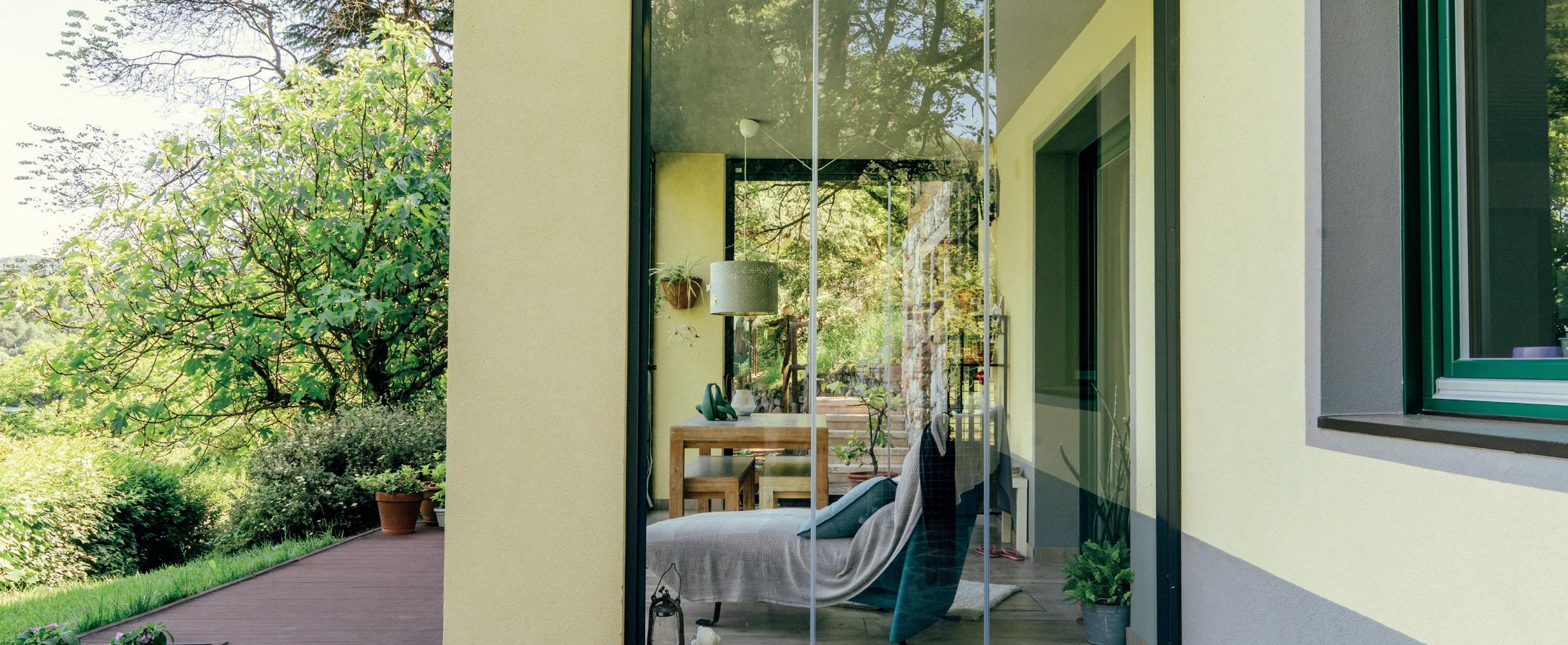


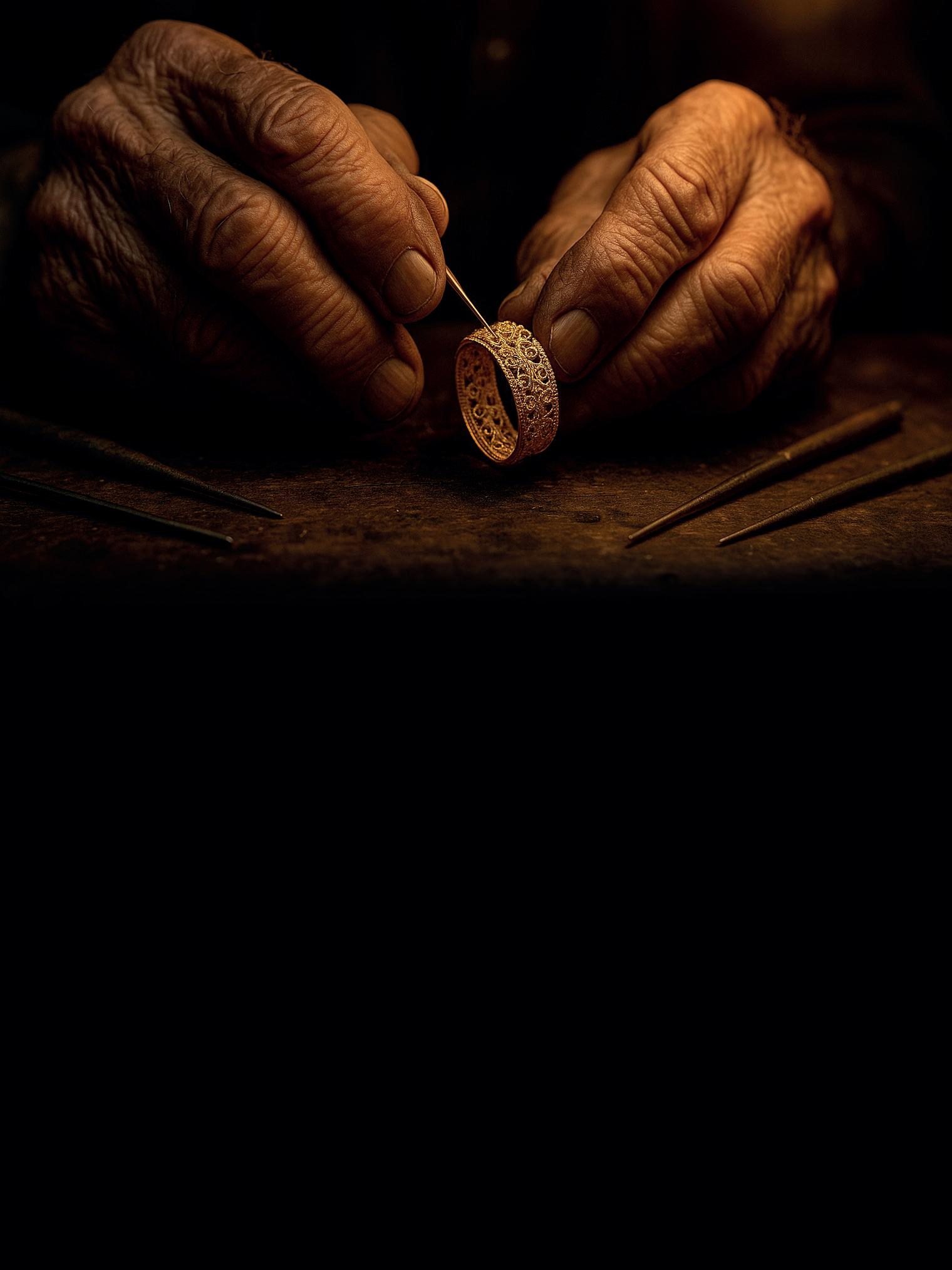
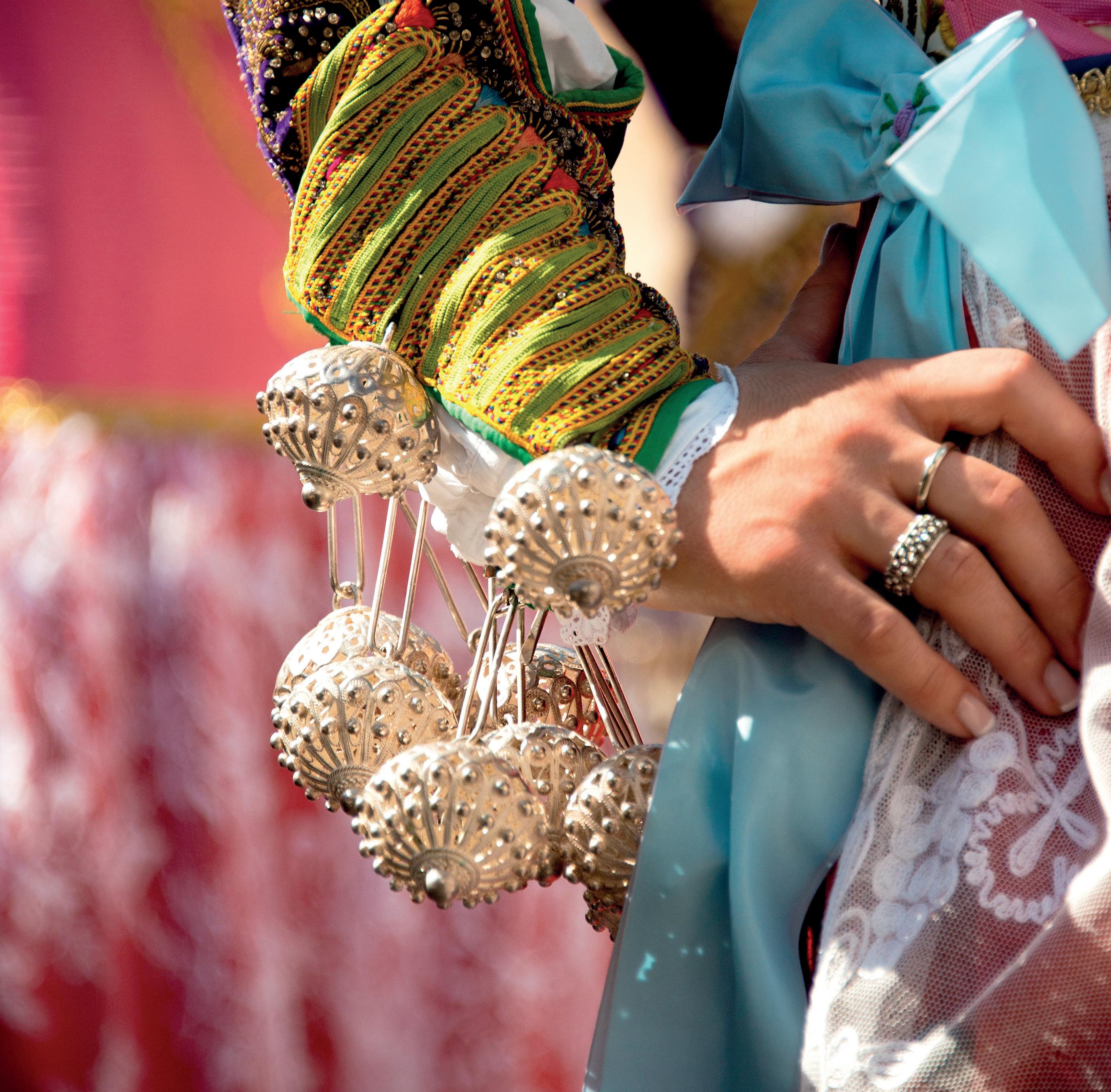
Nel cuore del Mediterraneo, dove la luce scolpisce paesaggi di selvaggia bellezza, la Sardegna custodisce un’arte orafa che va oltre il tempo. Non si tratta solo di ornamenti, ma di conversazioni silenziose intrecciate in oro e argento, frammenti di civiltà antiche, talismani che vibrano di simboli remoti e di un legame profondo con lo spirito dell’isola.
Questa arte nasce dall’orgoglio di un popolo e dall’abilità di mani che, generazione dopo generazione, hanno trasformato materiali preziosi in simboli chiari di un’identità unica. Oggi, questo lascito secolare brilla di una nuova grazia, intrecciando la sua narrazione storica con il design moderno, lasciando un segno distintivo nel panorama del lusso internazionale.
Le origini dell’oreficeria sarda si perdono in un passato leggendario, con le prime tracce nascoste tra i resti dell’epoca nuragica. Ma furono i marinai fenici e cartaginesi a portare nuove tecniche e stili, introducendo il gusto per il dettaglio elaborato e la narrazione simbolica, tratti che divennero distintivi. Oro, argento, corallo e pietre preziose venivano utilizzati per creare non solo gioielli, ma anche segni di status, amuleti protettivi e simboli di appartenenza.
In the Mediterranean’s embrace, where light shapes landscapes of untamed beauty, Sardinia preserves a goldsmith’s art that goes beyond time. These are not just adornments, but silent conversations woven ingoldandsilver,fragments of ancient civilizations, talismans that hum with old symbols and a deep connection to the island’s spirit. This art was born from the pride of a people and the skill of hands that, over generations, have turned precious materials into clear symbols of a unique identity. Today, this centuries-old legacy shineswithnewgrace,blendingitshistoricalstory with modern design, and making its distinct mark intheworldofinternationalluxury.
The beginnings of Sardinian goldsmithing reach back into a legendary past, with its earliest signs hidden in the ruins of the Nuragic age. However, it was the arrival of Phoenician and Carthaginian sailors that brought new techniques and styles to the island’s art. They introduced a fondness for intricate designs and symbolic storytelling, which becameadefiningfeature.Gold, silver, coral, and gemstones became the colors used to create not just jewelry, but also symbols of status, protective charms,andsignsofbelonging.
Through the centuries, under Roman, Byzantine,

Attraverso i secoli, sotto l’influenza romana, bizantina e spagnola, la Sardegna divenne un crocevia culturale. Gli artigiani locali seppero accogliere, rielaborare e reinterpretare con creatività ogni influenza. In questo contesto ricco e stimolante, tecniche come la filigrana—una danza delicata di sottilissimi fili d’oro e d’argento intrecciati come merletti—e la granulazione la decorazione con minuscole sfere lucenti— raggiunsero livelli altissimi di maestria, definendo uno stile al tempo stesso forte e raffinato. Oggetti religiosi e gioielli cerimoniali testimoniano una creatività continua, capace di sfidare i secoli, narrando storie di fede, potere e bellezza.
Ogni gioiello sardo è un piccolo mondo pieno di significato. La fede sarda, la classica fede nuziale con grani che richiamano i campi di grano, è molto più di una promessa d’amore: la leggenda racconta che fu intrecciata dalle dita magiche delle Janas, le fate dell’isola. Il bottone sardo, elemento essenziale dell’abbigliamento tradizionale, con la sua forma a doppia cupola che ricorda il seno materno, è un forte simbolo di fertilità, eco di antichi culti alla Dea Madre. Su Coccu, spesso realizzato in ossidiana o giaietto e incastonato in delicata filigrana d’argento, è più di un semplice amuleto: è uno sguardo benevolo che protegge dal malocchio, una presenza vigile contro le ombre. La corbula, pendente che riprende la forma sinuosa di un cesto tradizionale, è augurio di prosperità e abbondanza. Figure simboliche come la pavoncella—emblema di rinascita— arricchiscono ulteriormente questi gioielli, donando loro profondi significati. Oro e argento,
and Spanish rule, Sardinia became a melting pot of cultures. Local artisans skillfully adopted, processed, and creatively reimagined every influence. It was in this rich environment that techniques like filigree—a delicate dance of extremely thin precious threads forming gold and silver lace—and granulation—decorating surfaces with tiny, gleaming spheres—reached incredible levels of mastery, defining a style that is both strong and subtle. Religious objects and ceremonial jewelry show a continuous creativity that stands the test of time, telling stories of faith, power,andbeauty.
Every piece of Sardinian goldsmith’s work is like a small world, full of meaning. The “fede sarda” (Sardinian faith ring), the classic wedding band with grains that symbolize fertile wheat fields, is more than just a promise of love. Legend says it was woven by the magical fingers of the Janas, the island’s mythical fairies. The “bottone sardo” (Sardinian button), a key part of traditional clothing, with its double-domed shape recalling the maternal breast, is a strong symbol of fertility, echoing ancient Mother Goddess beliefs. “Su Coccu,” often made from jet or obsidian and set in delicate filigree silver holders, is more than just an amulet: it’s a kind look that protects against the evil eye, a watchful presence against shadows. The “corbula,” a pendant that copies the graceful shape of a traditional basket, wishes for prosperity and abundance. Symbolic figures like the “pavoncella” (little peahen or lapwing)—a sign of rebirth—further adorn these jewels, giving them deep symbolic meanings. Gold and silver,

metalli nobili per eccellenza, si uniscono spesso al rosso intenso del corallo, all’azzurro del turchese o alla profondità del granato—pietre scelte non solo per la loro bellezza, ma per le qualità protettive a esse attribuite.
Il fascino dell’oreficeria sarda oggi, per il viaggiatore raffinato e l’amante del lusso, nasce dalla sua incredibile capacità di collegare epoche diverse: proietta un’eredità antica nel futuro attraverso un dialogo raffinato tra memoria e innovazione. Gli artigiani e i designer contemporanei si avvicinano ai modelli del passato con una sensibilità moderna, alleggerendo le forme, sperimentando nuovi materiali, introducendo uno stile che rende queste creazioni perfettamente attuali, senza tradirne l’essenza.
Questa evoluzione consapevole ha permesso ai gioielli sardi di superare l’idea di semplice ornamento etnico per diventare autentiche opere d’arte. Sono creazioni dalla bellezza senza tempo, ricercate da una clientela internazionale che desidera unicità e autenticità: il tocco dell’artigiano racconta già una storia. In questo senso, il lusso diventa riconoscimento di valore intrinseco, di storia e di saperi antichi custoditi in un oggetto.
Oggi, il panorama dell’oreficeria sarda è animato da talenti capaci di unire la precisione delle tecniche tradizionali a una visione nuova e audace. Le botteghe storiche continuano la magia della filigrana con i metodi più antichi, preservandone purezza e autenticità. Allo stesso tempo, designer emergenti e nuovi brand infondono nuova linfa alla tradizione, reinterpretandola con uno stile sofisticato che dialoga con le tendenze del design internazionale, trovando spazio nelle vetrine più esclusive, da Cagliari a Porto Cervo. Ci sono anche maestri orafi che sconfinano nella scultura, creando pezzi unici in cui il metallo prezioso prende forme inedite, cariche di forza espressiva. Questi artisti, insieme a innumerevoli artigiani che lavorano con passione e discrezione nelle botteghe dell’isola, sono i veri custodi di un’arte che continua a incantare, arricchendo un patrimonio prezioso con nuove, brillanti interpretazioni. Sono loro che fanno sì che l’incanto dei gioielli sardi continui a splendere, conquistando i cuori di chi cerca, nel lusso, l’eco di una storia autentica e irripetibile.
L’oreficeria sarda, con la sua preziosa trama di fili e simboli radicati nel mito, è espressione tangibile dell’anima dell’isola. È un filo d’oro che unisce con forza passato, presente e futuro. Indossare un gioiello sardo non è solo ornarsi: è portare con sé un frammento di storia antica, un amuleto di bellezza che sussurra racconti remoti. In un mondo spesso incline all’omologazione, l’unicità e la profonda autenticità di queste creazioni rappresentano l’essenza stessa del lusso: un’eleganza dalle radici profonde, un fascino che non teme le stagioni, e che continua a brillare, raccontando al mondo la storia della Sardegna.
chosen noble metals, often blend with the deep red of coral, the sky blue of turquoise, or the rich darkness of garnets—gems picked not only for their inherent beauty but also for their believed protectivequalities.
The appeal of Sardinian goldsmithing today for the well-traveled visitor and luxury admirer comes from its amazing ability to connect different eras: it projects an ancient legacy into the future through a refined conversation between memory and innovation. Modern artisans and designers approach past styles with a contemporary sensibility, making shapes lighter, experimenting with new material combinations, and introducing a style that makes these creations wonderfully currentwhilekeepingtheircoreidentityintact.
This careful evolution has allowed Sardinian jewelry to move beyond being just ethnic ornaments and become true works of art. These creations show a timeless elegance, sought after byaninternationalclientelewhodesireuniqueness and the authenticity of an artisan’s touch, which itself tells a story. In this sense, luxury becomes the recognition of the intrinsic value, history, and centuries-old knowledge contained within an object.
The current scene of the island’s goldsmithing buzzeswithtalentedindividualswhocanblendthe strictness of traditional techniques with a daringly newvision.Historicworkshopscontinuethemagic of filigree using the oldest methods, preserving its authenticity and purity. At the same time, new designers and brands bring new life to tradition, reinterpreting it with a sophisticated style that connects with the most advanced international design trends, finding their place in the most exclusive displays, from Cagliari to Porto Cervo. There are also master goldsmiths whose work crosses into sculpture, creating unique pieces wherepreciousmetalisshapedintonewforms,full of powerful artistic expression. These individuals, along with countless other artisans who work quietlyandpassionatelyintheirworkshopsacross the island, are the true representatives of an art that continues to charm, enriching an invaluable heritage with new, brilliant interpretations. They ensure that the enchantment of Sardinian jewels continues to shine, winning the hearts of those who seek in luxury the echo of an authentic and uniquestory.
Sardiniangoldsmithing,withitspreciousweaveof threads and symbols rooted in myth, is a tangible expression of the island’s soul. It is a golden thread that firmly connects the past, present, and future. To wear a Sardinian jewel is not just to adorn oneself; it’s to carry a piece of this ancient story, a beautiful amulet that whispers old tales. In a world that often leans towards sameness, the uniqueness and deep authenticity of these creations represent the very essence of luxury: an elegance with deep roots, a charm that isn’t afraid of changing seasons, and continues to shine its light,tellingSardinia’sstorytotheworld.

L’oreficeria sarda, con la sua preziosa trama di fili e simboli radicati nel mito, è espressione tangibile dell’anima dell’isola.
Sardiniangoldsmithing,withitspreciousweaveofthreadsandsymbolsrootedinmyth, isatangibleexpressionoftheisland’ssoul.
Fili d’Oro e Sussurri Ancestrali


Nel cuore pulsante della laguna veneziana, un’isola irradia una luce tutta sua. Non è solo quella del sole riflesso sull’acqua, ma un bagliore che nasce dalle profondità infuocate delle sue fornaci secolari: Murano. Più che una semplice porzione di terra, Murano è un’idea, un simbolo universale dell’arte vetraria, custode gelosa di un sapere ancestrale che attraversa i millenni, trasformando sabbia e fuoco in forme di bellezza impalpabile e sublime. Qui, la tradizione del vetro non è solo esercizio artigianale, ma un linguaggio artistico complesso, stratificato, una narrazione ininterrotta fatta di gesti sapienti, segreti tramandati come reliquie preziose e una passione indomita che ha sfidato il tempo, le mode e le vicende della storia.
La saga del vetro di Murano affonda le radici in un passato lontano, ma la sua consacrazione ufficiale risale al 1291. In quell’anno decisivo, la Serenissima Repubblica di Venezia decretò – con una scelta tanto strategica quanto lungimirante –il trasferimento di tutte le fornaci attive dal centro storico all’isola di Murano. Le motivazioni erano molteplici: prevenire i devastanti incendi che le alte temperature potevano causare nell’edilizia fitta della città, e al contempo esercitare un controllo
In the beating heart of the Venetian lagoon, an island radiates its own light, a glow that comes not just from the sun reflected on the water, but emanates from the fiery depths of its centuriesold furnaces: Murano. More than a mere stretch of land,Muranoisanidea,auniversalsymbolofglass art,thejealousguardianofanancestralknowledge thathasspannedmillennia,transformingsandand fire into forms of impalpable and sublime beauty. Here, the tradition of glass isn’t limited to a mere artisanal exercise; it’s a complex and layered artistic language, an uninterrupted narrative wovenwithskilledgestures,secretshandeddown like precious relics, and an indomitable passion that has defied time, trends, and the vicissitudes ofhistory.
The saga of Murano glass has its roots in a distant past, but its official consecration dates back to 1291.Inthatcrucialyear,theSerenissimaRepublic of Venice, with a strategic and far-sighted move, decreed the transfer of all active glassworks from the historic center to the island of Murano. The reasons were manifold: primarily, to prevent the devastating fires that the furnaces could unleash in Venice’s densely built urban fabric; secondly,

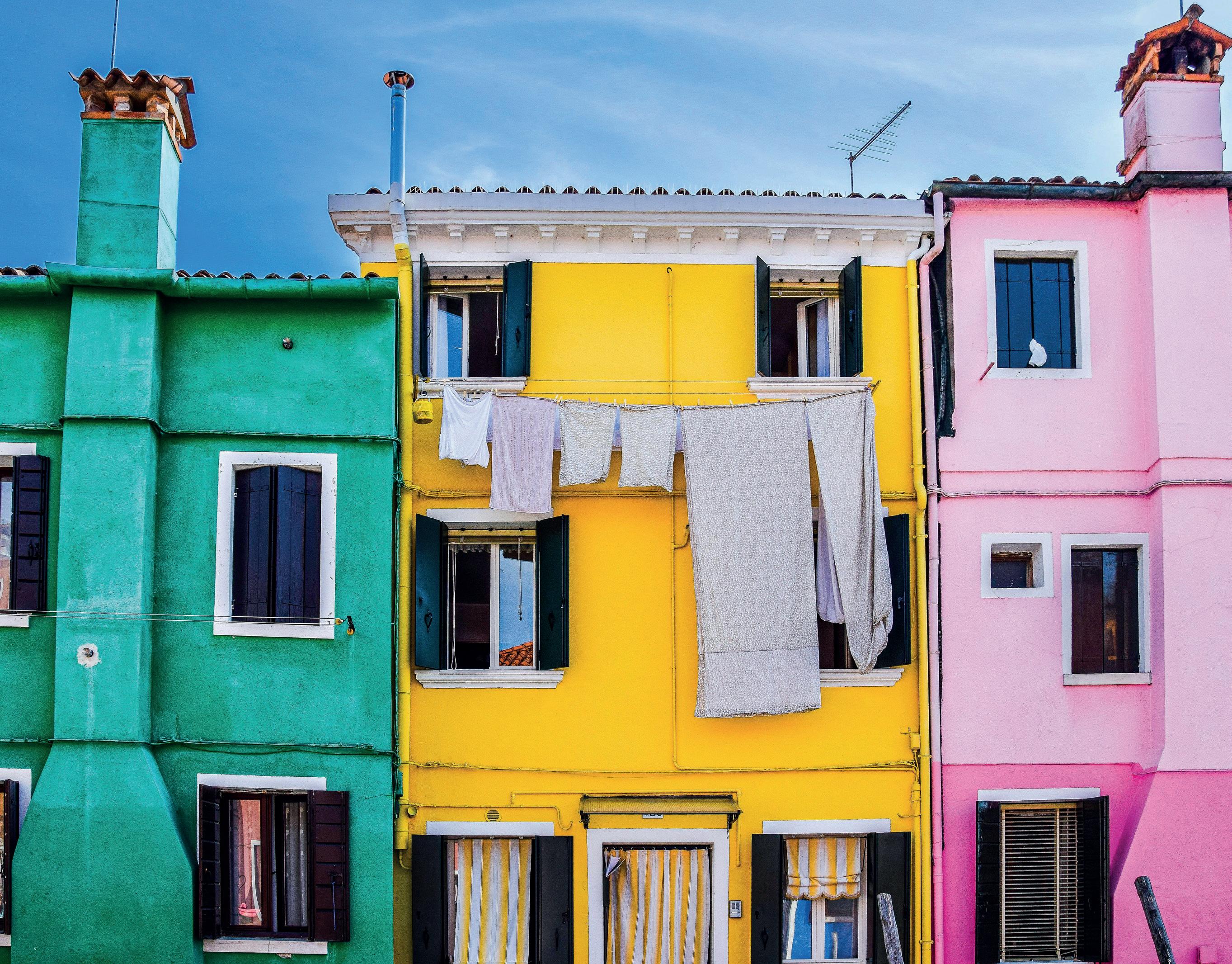
più stretto su un’arte che già allora rappresentava una ricchezza economica inestimabile e motivo d’orgoglio per la Repubblica, proteggendone i segreti produttivi dagli appetiti delle potenze straniere. Da quel momento, Murano divenne –e per secoli rimase – il faro indiscusso dell’arte del vetro nel mondo, monopolio de facto nella produzione di oggetti di lusso e specchi di qualità impareggiabile. Gli artigiani muranesi, isolati ma privilegiati, svilupparono un repertorio tecnico che ancora oggi suscita meraviglia per la sua complessità e raffinatezza.
Dal vetro soffiato – tecnica fondamentale che consente di creare forme leggere come un respiro – i maestri hanno affinato lavorazioni sempre più virtuosistiche: l’invenzione del cristallo veneziano, trasparente e puro come mai prima; le murrine, minuscoli mosaici ottenuti sezionando canne di vetro policromo; la filigrana (reticello o retortoli), di un’eleganza diafana; l’incalmo, ardita tecnica che unisce a caldo sezioni di vetro di colore diverso con
to gain tighter control over an art that already represented immense economic wealth and a source of pride for the Republic, thereby more effectively protecting its production secrets from the growing curiosity and desires of foreign powers. From that moment, Murano became, and for centuries remained, the undisputed beacon of glass art worldwide, a de facto monopoly for the production of luxury objects and mirrors of unparalleled quality. The Muranese master glassmakers, isolated yet privileged, developed and refined a repertoire of techniques that still inspire wonder for their inherent complexity and exquisiterefinement.
From blown glass, a fundamental technique that allows for the creation of ethereal and light forms likebreaths,theymovedontoincrediblymasterful workings: the invention of Venetian crystal, transparent and pure like no other before; the creation of murrine, small mosaic masterpieces obtained by sectioning polychrome glass canes;

precisione millimetrica; la magia dell’avventurina, vetro traslucido con riflessi rameici scintillanti. Ogni tecnica rappresenta un capitolo fondamentale in un immenso libro di conoscenze, un patrimonio spesso custodito all’interno delle dinastie vetrarie e trasmesso di generazione in generazione, da padre a figlio, da maestro ad apprendista, in un fluire continuo di sapere pratico e intuizione artistica. Le famiglie di maestri vetrai godevano di tale prestigio che venivano annotate nel Libro d’Oro dell’isola, con privilegi unici.
Al centro di questo universo incandescente c’è la figura carismatica del maestro vetraio: moderno alchimista, artista-artigiano in costante dialogo con gli elementi primordiali – il fuoco domato nella fornace, la sabbia silicea, i minerali che danno colore. Anni, decenni di apprendistato duro, una dedizione quasi sacerdotale, e una sensibilità artistica affinata dall’esperienza quotidiana sono requisiti essenziali per dominare una materia fusa, incandescente e imprevedibile. Guidarla con il soffio modulato della canna da soffio, modellarla
the diaphanous elegance of filigree (reticello or retortoli);thetechnicalaudacityof incalmo,which involves hot-joining glass parts of different colors withmillimetricprecision;thecharmofaventurine, a translucent glass with brilliant copper flecks. Each technique is a fundamental chapter in an immense book of knowledge, a heritage often jealously guarded within glassmaking dynasties and passed down from father to son, from master to apprentice, in a continuous flow of practical knowledge and artistic intuition. The families of master glassmakers were so important that they were inscribed in the island’s Golden Book, enjoyinguniqueprivileges.
At the center of this incandescent universe stands the charismatic figure of the master glassmaker He is a modern alchemist, an artist-artisan who maintains an intimate and constant dialogue with primordialelements:thefiretamedinthefurnace, silica sand, and minerals that impart color. Years, decades of hard apprenticeship, a dedication bordering on priesthood, and an innate artistic
con gesti antichi e precisi, usare strumenti semplici ma efficaci come borselle e forbici, è un’arte che richiede forza fisica, concentrazione mentale e un profondo senso della forma e dell’armonia. È un lavoro di fatica estrema e delicatezza sublime, di pazienza infinita e intuizione fulminea, in cui ogni pezzo creato è irripetibile, firmato dall’impronta del maestro e frutto di un istante creativo che non potrà mai ripetersi uguale.
Questo straordinario lascito secolare, ricco di gloria ma anche di sfide, pulsa ancora oggi grazie alla tenacia, alla passione e alla visione di artigiani e artisti che ne rinnovano lo spirito, innovando nella tradizione. Tra questi interpreti contemporanei spicca Massimiliano Schiavon, figura ponte tra il glorioso passato dell’isola e il suo presente dinamico, capace di valorizzare il significato profondo dell’autenticità e il lusso intrinseco del “fatto a mano” d’eccellenza. Cresciuto letteralmente tra i fuochi della fornace del nonno, il celebre maestro Albino Schiavon, Massimiliano incarna la continuità di una stirpe legata alla più alta tradizione muranese. Le sue Vetrerie Schiavon non sono semplici luoghi di produzione, ma veri atelier creativi, cenacoli dove il rispetto quasi sacrale per le tecniche antiche si fonde armoniosamente con
sensibility, refined by daily experience, are the essential requirements to aspire to dominate the molten, incandescent, and capricious material. Guidingitwiththepowerfulandmodulatedbreath of the blowing pipe, shaping it with precise, rapid, and ancient gestures, using simple but effective toolslike borselle and forbici(pincersandshears), is an art that requires physical strength, mental concentration, and a profound sense of form and harmony.Itisaworkofextremeeffortandsublime delicacy, of infinite patience and lightning-fast intuition, where every single piece created is unrepeatably unique, sealed by the master’s personalimprintandtheresultofacreativeinstant thatwillneverbeidenticalagain.
This extraordinary centuries-old legacy, rich in glory but also in challenges, continues to pulse vividly today thanks to the tenacity, passion, and visionary commitment of artisans and artists who perpetuate its spirit, innovating within the tradition. Among these contemporary interpreters, figures like Massimiliano Schiavon represent a fundamental link between the island’s glorious past and the dynamic present, capable of appreciating the inestimable value of authenticity and the intrinsic luxury of artfully

Murano
un’estetica moderna e internazionale. Opere come i suoi sontuosi lampadari – sospesi come creature marine luminose – o le sue sculture vibranti di colore e materia, dimostrano come la tradizione vetraria possa evolvere senza mai tradire la propria anima, parlando un linguaggio universale a un pubblico colto, esigente e consapevole, che cerca nel vetro di Murano non solo un ornamento, ma un frammento tangibile di storia, cultura ed eccellenza italiana. Artisti come Schiavon, e le fornaci che mantengono standard così elevati, sono fondamentali per la sopravvivenza di un’arte che richiede competenze straordinarie e investimenti costanti.
L’unicità assoluta di un’opera in vetro di Murano risiede proprio in questa magica alchimia: la purezza cristallina dei materiali, selezionati con rigore; il sapere tecnico accumulato e affinato nei secoli; la visione artistica del maestro. Tutto
“handmade” goods. Literally raised amidst the fires of his grandfather’s furnace, the celebrated master Albino Schiavon, Massimiliano embodies the continuity of a family lineage deeply rooted in the highest tradition of Muranese art. His Vetrerie Schiavon are not merely a place of production, butareconfiguredasanauthenticcreativeatelier, a cenacle where an almost sacred respect for traditional techniques harmoniously blends with a modern and international aesthetic sensibility. Works such as his sumptuous chandeliers, which seem to float in the air like luminous marine creatures, or his sculptures vibrant with color and material, eloquently demonstrate how glassmaking tradition can evolve without ever betrayingitssoul,speakingauniversallanguageto a discerning, demanding, and aware international clientele who seek in Murano glass not just a decorative object, but a tangible fragment of history,culture,andItalianexcellence.

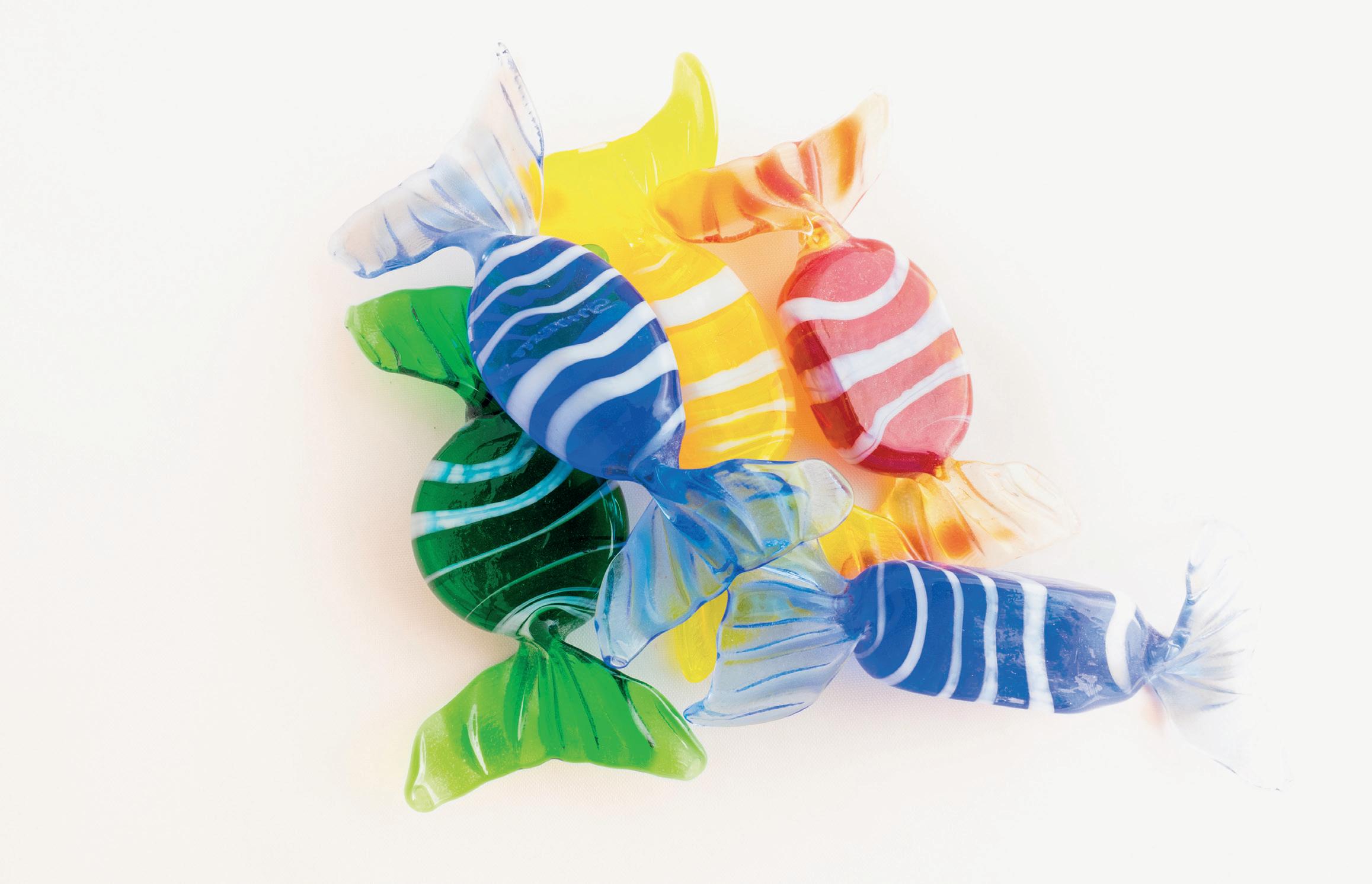
si fonde in oggetti che trascendono la funzione per elevarsi a sculture di luce. Che si tratti di un calice di impalpabile leggerezza, inciso o decorato a foglia d’oro, di un vaso dai colori sorprendenti e dalle forme ardite, o di un’installazione luminosa monumentale che ridefinisce lo spazio, ogni creazione porta impressi l’eco delle antiche fornaci, il respiro vitale del maestro, e la storia millenaria di un’isola che ha consacrato la propria esistenza alla ricerca della bellezza assoluta.
Artists like Schiavon, and the furnaces that maintain these exceptionally high standards, are essential for the perpetuation of an art that requires continuous investment in terms of skill and resources.
The immeasurable uniqueness of a Murano glass artwork lies precisely in this magical alchemy: the crystalline purity of the materials, meticulously selected, the sum of technical skills handed down and refined through the centuries, and the artistic vision of the master merge into objects that transcend their mere function to rise to the rank of true sculptures of light. Whether it’s a chalice of impalpable lightness, finely engraved or decorated with gold leaf, a vase with surprising colors and daring forms, or an imposing luminous installation that redefines space, every single creation bears indelibly impressed within it the echo of the ancient furnaces, the vital breath of the master, the millennial history of an island that has consecrated its existence to the pursuit of absolutebeauty.

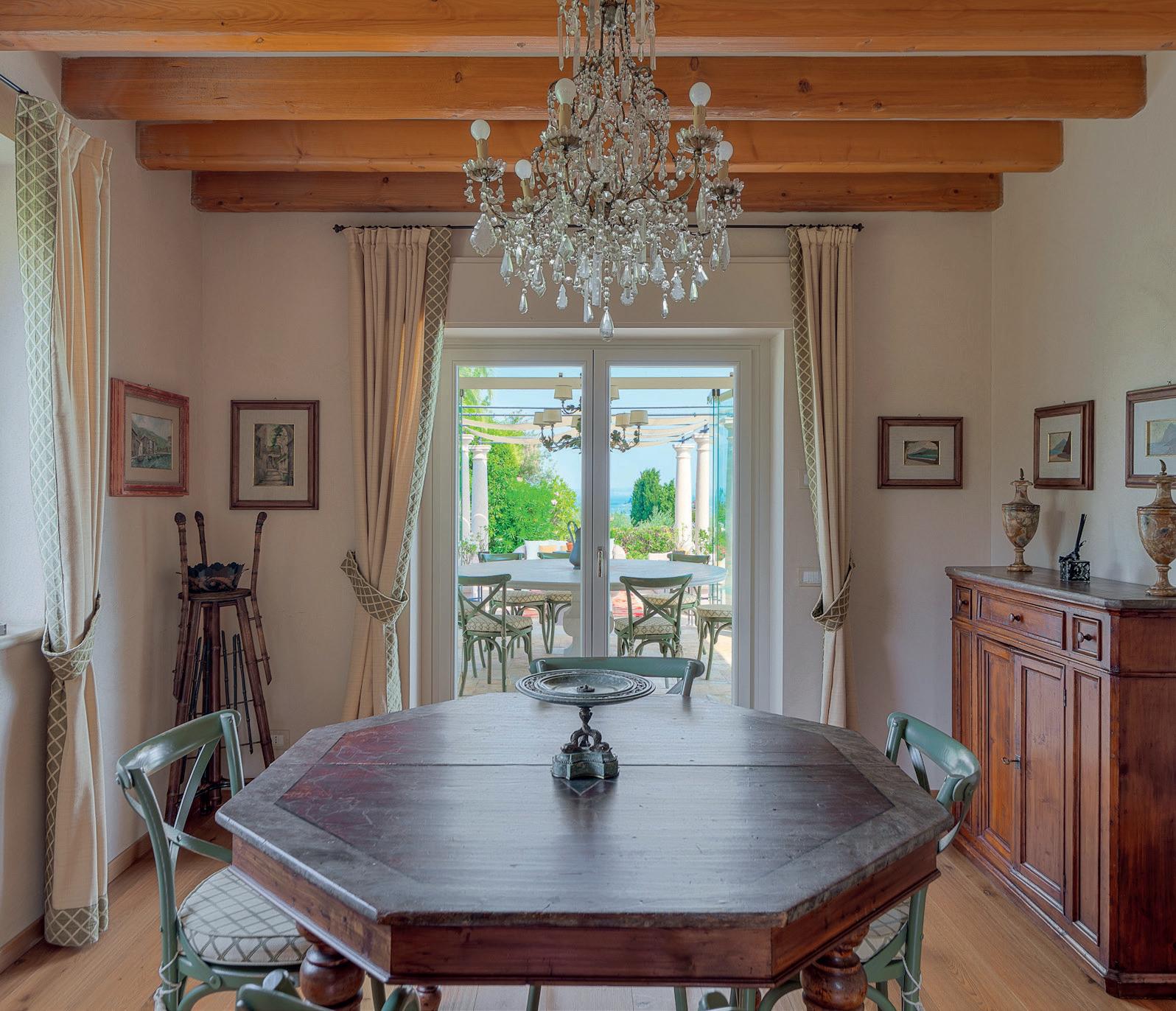
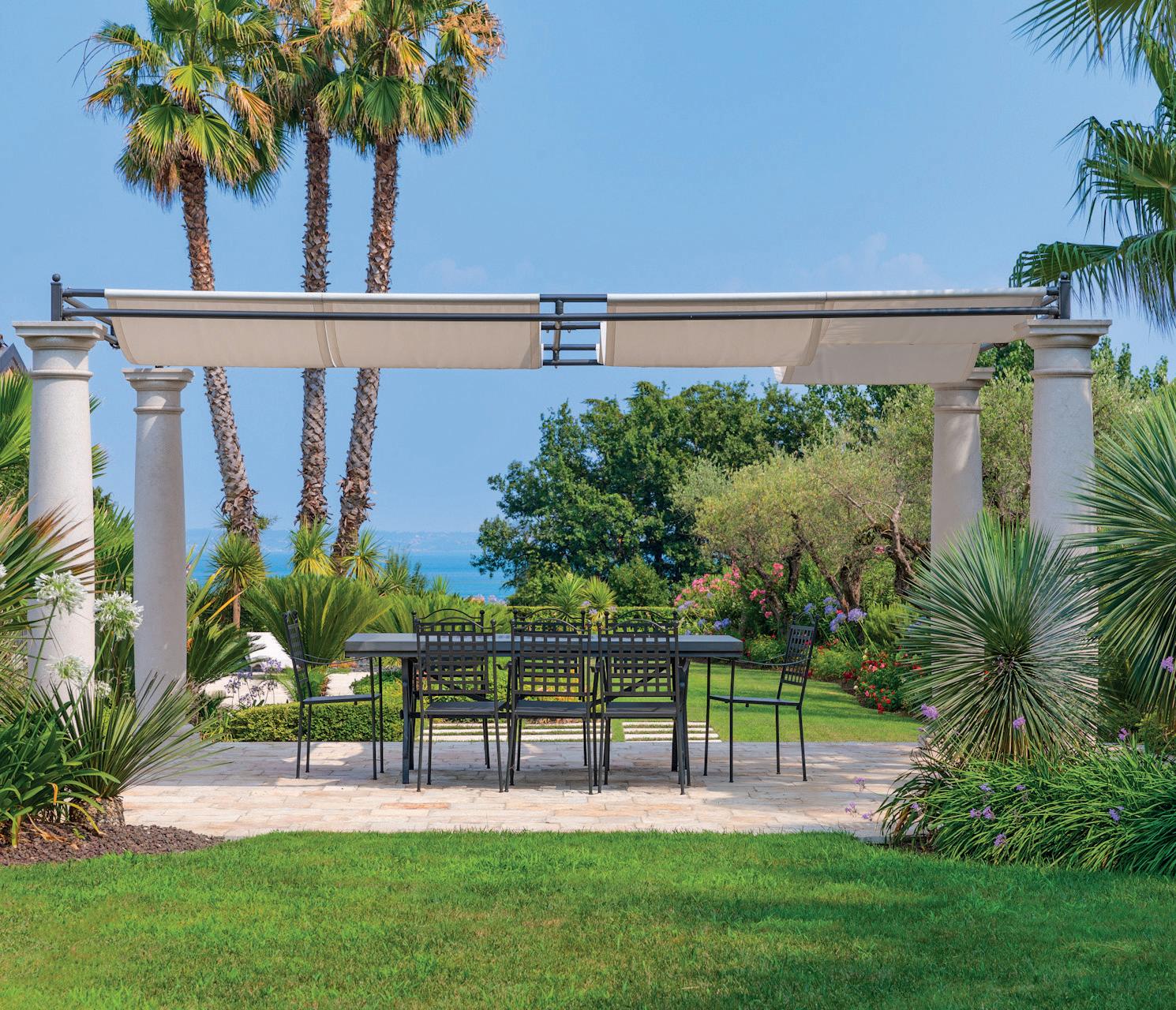


Villa incantata con Vista Lago
Enchanted Villa with Lake View
Villa “Pieddansl’Eau” in centro a Desenzano del Garda “Pied
dans l’Eau” villa in downtown Desenzano

Ref. DV-413



Garda d’Autore: un nelViaggio Gusto

I Tesori Culinari del Lago di Garda, dall’Eredità Autentica all’Eccellenza Contemporanea.
L’Italia, terra di poeti, navigatori e santi, è anche, e forse soprattutto, una sinfonia di sapori, un palcoscenico dove l’arte culinaria si eleva a diventare una delle espressioni culturali più profonde e universali. Parlare di cucina italiana significa intraprendere un viaggio che va ben oltre il semplice appagamento del palato. È un’immersione nella storia di un popolo, nelle sue tradizioni più radicate, nella sua innata vocazione alla convivialità e alla celebrazione della vita attraverso il cibo. È un linguaggio intessuto di passione, un mosaico di identità regionali dove ogni piatto racconta una storia, ogni sapore evoca un paesaggio. In questa magnifica tela, la “cucina d’autore” contemporanea non si pone come qualcosa di astratto o separato ma, al contrario, fiorisce come la più raffinata evoluzione di un sapere antico, un dialogo costante e fecondo tra il prezioso patrimonio della memoria e l’audace spirito di un’innovazione rispettosa.
Italy, a land of poets, navigators and saints is also, and perhaps above all, a symphony of flavors, a stagewhereculinaryartrisestobecomeoneofthe deepest and most universal cultural expressions. Talking about Italian cuisine means embarking on a journey that goes far beyond simply pleasing the palate. It’s an immersion into the history of a people, their most rooted traditions, their innate callingfortogetherness,andthecelebrationoflife through food. It’s a language woven with passion, a mosaic of regional identities where every dish tells a story, every flavor evokes a landscape. In thismagnificentcanvas,contemporary“signature cuisine” doesn’t stand as something abstract or separate but, on the contrary, flourishes as the most refined evolution of ancient knowledge, a constant and fruitful dialogue between the preciousheritageofmemoryandtheboldspiritof respectfulinnovation.

Garda d’Autore: Un Viaggio nel Gusto
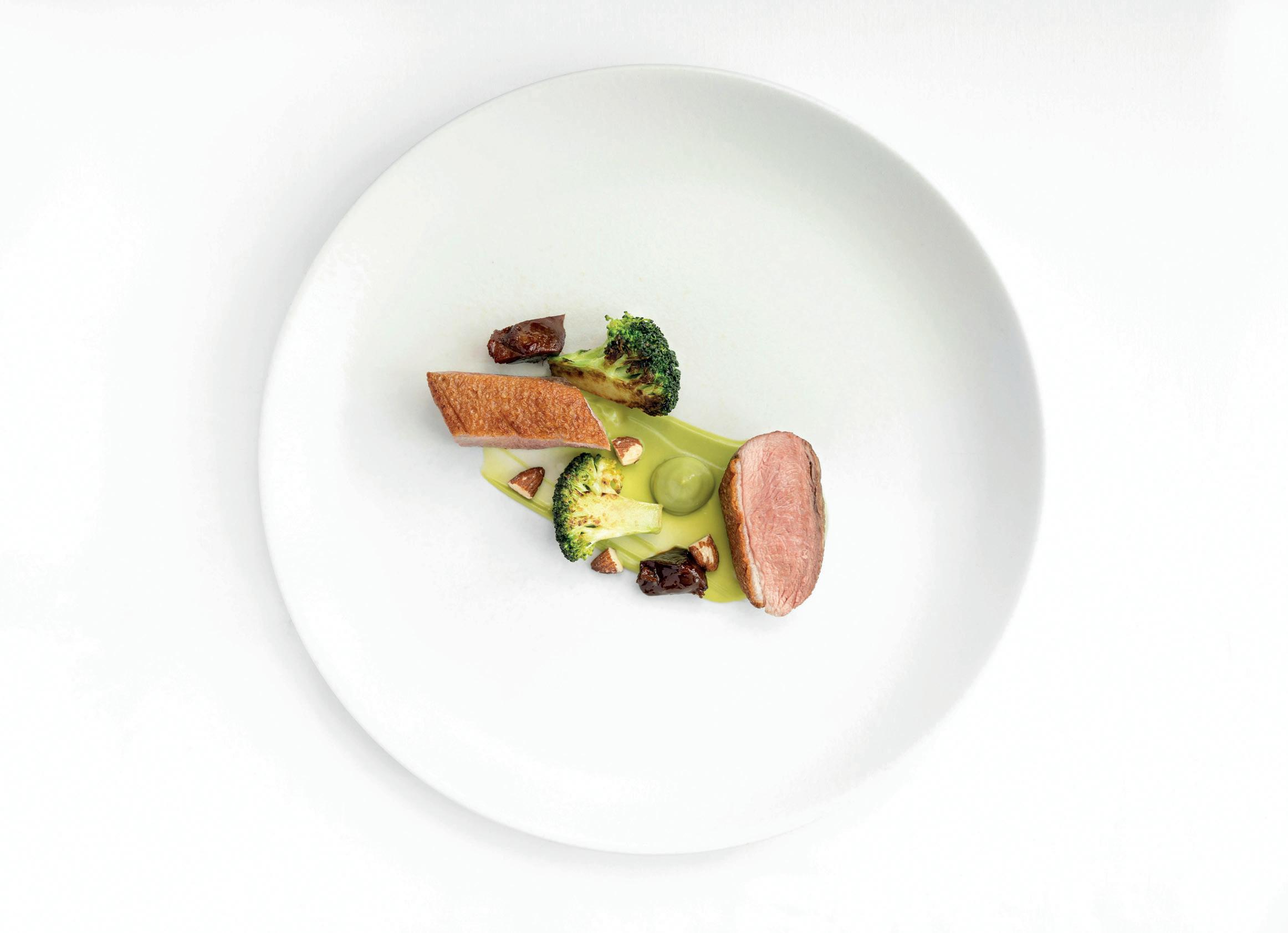
Nel cuore pulsante di questa straordinaria ricchezza gastronomica vibra l’anima saggia e luminosa della Dieta Mediterranea, un tesoro riconosciuto dall’UNESCO come Patrimonio Culturale Immateriale dell’Umanità. È molto più di un semplice elenco di cibi consigliati; è una filosofia di vita, un modo di esistere che affonda le sue radici in tempi antichi, quando l’uomo viveva in armonia con i ritmi della natura. L’olio extra vergine di oliva, fragrante oro liquido, ne è il cardine insostituibile, affiancato da un’esplosione di colori e profumi provenienti da verdure fresche dell’orto colte al culmine della loro stagione, da legumi nutrienti, da cereali integrali che odorano di campi baciati dal sole, da frutta succosa e dal gusto sapido del pesce azzurro. Un consumo equilibrato di latticini e carni completa questo quadro di armonia nutrizionale, un vero elisir di lunga vita che coniuga il piacere sublime del gusto con il benessere del corpo e della mente. La dieta mediterranea è l’espressione più autentica di un’agricoltura che nutre la terra, di una cucina che esalta la purezza delle materie prime con tocchi leggeri e sapienti, promuovendo la biodiversità come valore imprescindibile e la sostenibilità come imperativo etico. È un’eredità di profonda saggezza che ci insegna l’equilibrio, il valore inestimabile di una semplicità che rasenta la perfezione e la gioia profonda della condivisione di un pasto, luogo degli affetti e delle storie.
At the beating heart of this extraordinary gastronomic richness vibrates the wise and bright soul of the Mediterranean Diet, a treasure recognized by UNESCO as an Intangible Cultural Heritage of Humanity. It’s much more than just a list of recommended foods; it’s a philosophy of life, a way of existing rooted in ancient times, when humans lived in harmony with nature’s rhythms. Extra virgin olive oil, fragrant liquid gold, is its irreplaceable cornerstone, joined by an explosion of colors and aromas from fresh garden vegetables picked at their peak season, nourishing legumes, whole grains smelling of sun-kissed fields, juicy fruits, and the savory taste of oily fish. A balanced consumption of dairy and meats completes this picture of nutritional harmony, a true elixir of long life that combines the sublime pleasure of taste with the well-being of body and mind. The Mediterranean diet is the most authentic expression of an agriculture that nurtures the earth, of a cuisine that elevates the purity of raw ingredients with light and skillful touches, promoting biodiversity as an essential value and sustainability as an ethical imperative. It isalegacyofdeepwisdomthatteachesusbalance, the invaluable worth of simplicity that borders on perfection,andtheprofoundjoyofsharingameal, aplaceforaffectionsandstories.
Su queste fondamenta solide e nobili si innesta il genio creativo e la sapienza illuminata dei grandi chef italiani, che di questo immenso patrimonio sono al tempo stesso i custodi e gli interpreti più sensibili. La loro arte risiede in una conoscenza enciclopedica della tradizione – quel meraviglioso scrigno di ricette, tecniche di cottura e usanze locali che varia all’infinito da regione a regione, da borgo a borgo – e nella capacità sublime di reinterpretarla con uno sguardo contemporaneo, leggero e acuto. Non si tratta mai di uno stravolgimento irrispettoso, ma di un delicato lavoro di esaltazione, di una ricerca che svela nuove sfumature di sapori antichi, di un alleggerimento che ne amplifica l’eleganza e di accostamenti audaci e sorprendenti che, tuttavia, non tradiscono mai l’anima più profonda e riconoscibile del gusto originario. Questo approccio, intriso di passione e rigore, richiede una familiarità quasi intima con i prodotti del territorio, molti dei quali fregiati dei prestigiosi sigilli DOP (Denominazione di Origine Protetta) e IGP (Indicazione Geografica Protetta), autentici vessilli di un terroir unico e di un “saper fare” tramandato attraverso le generazioni. Le competenze, in questo senso, trascendono la mera abilità tecnica per diventare la capacità di infondere in ogni creazione culinaria una visione, un’emozione palpabile, una storia che si dispiega al palato e tocca le corde più profonde del cuore.
Upon these solid and noble foundations, the creativegeniusandenlightenedskillofgreatItalian chefsarebuilt.Theyareboththeguardiansandthe most sensitive interpreters of this vast heritage. Their art lies in an encyclopedic knowledge of tradition—thatwonderfultreasurechestofrecipes, cookingtechniques,andlocalcustomsthatvaries endlessly from region to region, village to village— and in the sublime ability to reinterpret it with a contemporary, light, and insightful perspective. It is never about disrespectful distortion, but a delicate work of enhancement, a quest to reveal new nuances of ancient flavors, a lightening that amplifies their elegance and bold, surprising combinations that, however, never betray the deepestandmostrecognizablesouloftheoriginal taste.Thisapproach,steepedinpassionandrigor, demands an almost intimate familiarity with local products, many of which bear the prestigious DOP (Protected Designation of Origin) and IGP (Protected Geographical Indication) seals, authenticbannersofaunique terroir and a “knowhow” passed down through generations. Skills, in this sense, transcend the mere technical abilities to become the capacity to infuse every culinary creation with a vision, a palpable emotion, a story thatunfoldsonthepalateandtouchesthedeepest stringsoftheheart.
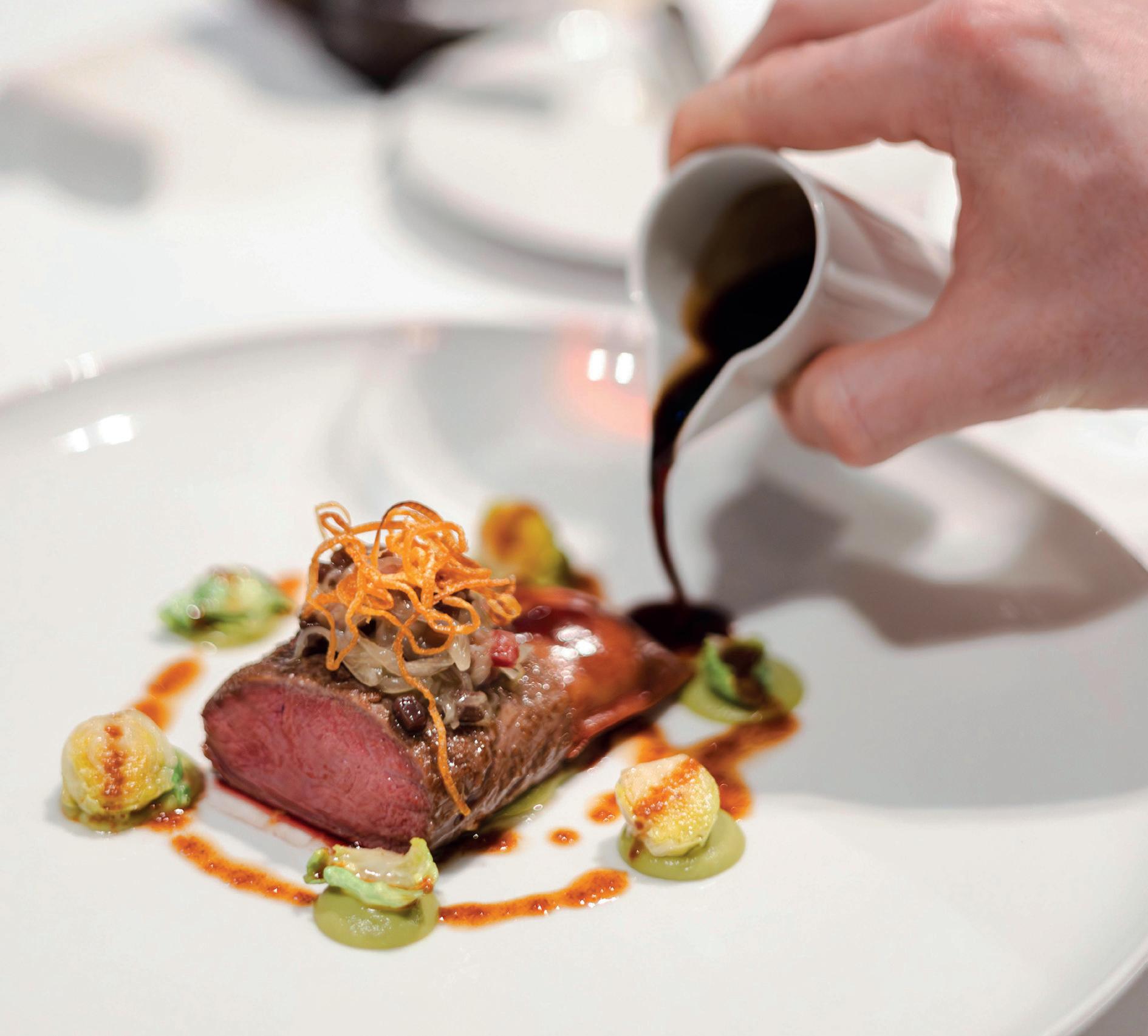
Possiamo osare dire che il Lago di Garda sia uno dei principali territori italiani in cui questa armonica fusione tra natura generosa e abbondante, tradizioni secolari ed eccellenza gastronomica abbia raggiunto le vette più alte. Con il suo microclima quasi miracolosamente mediterraneo, un’oasi di calore e luce incastonata come un gioiello tra le severe cime alpine e le dolci distese della Pianura Padana, il Garda offre un paniere di prodotti di qualità e varietà sbalorditive. C’è l’olio extra vergine di oliva Garda DOP, un nettare dorato dalle sfumature fruttate e di una delicatezza quasi aromatica; gli agrumi intensamente profumati – limoni, cedri, arance – coltivati con amore in antiche limonaie terrazzate, monumenti viventi di un’ingegneria agricola tanto ardita quanto poetica; il pesce di lago, dal delicato coregone al gustoso persico, fino alle umili ma saporitissime sarde, ingredienti chiave di ricette che ne esaltano la freschezza; e i vini pregiati – l’elegante Lugana, il vivace Bardolino, l’intenso Valtenesi con il suo autoctono Groppello – che sigillano un patto d’amore con i sapori locali. Questo territorio privilegiato e benedetto è il palcoscenico ideale per una ristorazione che mira, e spesso raggiunge, la perfezione.
È qui, sulle pittoresche e assolate rive del lago più grande d’Italia, che una costellazione di stelle Michelin brilla di un’intensità particolare, a testimonianza di una concentrazione di talento, ricerca e qualità che attira gourmet appassionati da ogni angolo del globo. Questi santuari del gusto rappresentano l’apice della cucina d’autore, dove la filosofia mediterranea di freschezza e leggerezza si fonde con una ricerca e un’innovazione instancabili che non smettono mai di sorprendere. Brilla di luce propria la leggendaria Villa Feltrinelli a Gargnano, che detiene due stelle Michelin. Sotto
WecandaresaythatLakeGardaisoneofthemain Italian territories where this harmonious blend of generous and abundant nature, centuriesold traditions, and gastronomic excellence have been reaching the highest peaks. With its almost miraculouslyMediterraneanmicroclimate,anoasis of warmth and light nestled like a jewel between the stern Alpine peaks and the gentle expanses of the Po Valley, Garda offers a basket of products of astonishing quality and variety. There’s Garda DOP extra virgin olive oil, a golden nectar with fruitynuancesandanalmostaromaticgentleness; intensely fragrant citrus fruits—lemons, cedars, oranges—lovingly cultivated in ancient terraced lemongroves,livingmonumentsofanagricultural engineering as bold as it is poetic; lake fish, from the delicate whitefish to the tasty perch, down to the humble but incredibly flavorful sardines, key ingredients in recipes that highlight their freshness; and fine wines—the elegant Lugana, the lively Bardolino, the intense Valtenesi with its indigenous Groppello—which seal a pact of love withlocalflavors.Thisprivileged,blessedterritory is the ideal stage for restaurants that aim for, and oftenachieve,perfection.
It is here, on the picturesque and sunny shores of Italy’s largest lake, that a constellation of Michelin stars shines with particular intensity, bearing witness to a concentration of talent, research, and quality that draws passionate gourmets from every corner of the globe. These sanctuaries of taste represent the pinnacle of signature cuisine, where the Mediterranean philosophy of freshness and lightness merges with tireless research and innovation that never ceases to surprise. The legendary Villa FeltrinelliinGargnanoshineswith itsownlight,holdingtwoMichelinstars.Underthe enlightened guidance of Chef Stefano Baiocco,

la guida illuminata dello Chef Stefano Baiocco, questa dimora storica, icona di un’eleganza senza tempo affacciata sulle acque specchianti del lago, offre un’esperienza gastronomica che è pura poesia. Ogni piatto è un’opera d’arte, un equilibrio magistrale di sapori, colori e consistenze, frutto di una ricerca meticolosa e di un profondo rispetto per la natura. Poco distante, a Gardone Riviera, l’innovazione e la creatività trovano casa al Lido 84, ristorante con una stella Michelin, dove i fratelli Giancarlo e Riccardo Camanini hanno creato una meta di culto per i palati più esigenti. La loro è una cucina audace e profondamente radicata, un omaggio vibrante al territorio gardesano e alla grande tradizione italiana, riletta con un lampo di genio contemporaneo e un amore palpabile per ogni singolo ingrediente. Ogni visita è una scoperta, un’emozione che si rinnova. Sempre a Gargnano, La Tortuga, con una stella Michelin, affascina con la sua atmosfera storica e una proposta culinaria che sa fondere con maestria i piatti della più genuina tradizione gardesana con un tocco di raffinata modernità, in un dialogo che parla di storia e di futuro. A Manerba del Garda, il Ristorante Capriccio, anch’esso premiato con una stella Michelin, accoglie i suoi ospiti in un ambiente elegantemente sofisticato direttamente sulle rive del lago, offrendo una cucina ricercata che è un vero e proprio viaggio sensoriale. Spostandosi a Desenzano del Garda, l’Esplanade, ristorante con una stella Michelin, si distingue per la sua cucina creativa, un’attenzione quasi
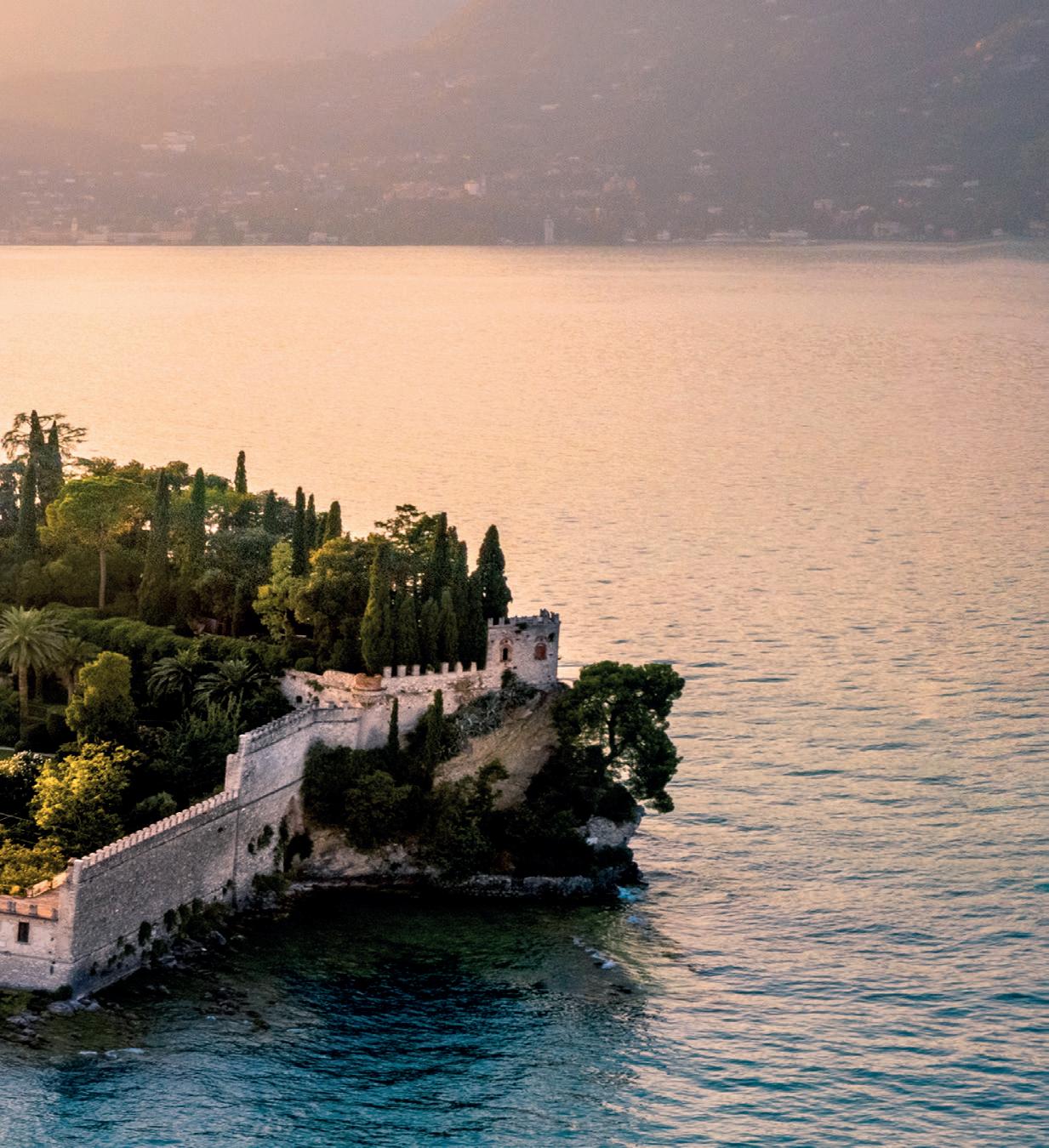
thishistoricresidence,aniconoftimelesselegance overlooking the lake’s mirroring waters, offers a gastronomic experience that is pure poetry. Each dish is a work of art, a masterful balance of flavors, colors, and textures, the result of meticulous researchanddeeprespectfornature.
Not far away, in Gardone Riviera, innovation and creativity find a home at Lido 84, a one-Michelinstarred restaurant, where brothers Giancarlo and Riccardo Camanini have created a cult destination for the most demanding palates. Their cuisine, both bold and deeply rooted, is a vibrant homage to the Garda area and great Italian tradition, reinterpreted with a flash of contemporary genius and a palpable love for every single ingredient. Every visit is a discovery, an ever-renewing emotion. Also in Gargnano, La Tortuga, with one Michelin star, charms with its historic atmosphere and a culinary offering that skillfully blends the most genuine Garda traditional dishes with a touch of refined modernity, in a dialogue that speaks of history and future. In Manerba del Garda, Capriccio Restaurant, also awarded one Michelin star, welcomes its guests in an elegantly sophisticated setting directly on the lake’s shores, offering sophisticated cuisine that is a true sensory journey. Moving to Desenzano del Garda, Esplanade, a one-Michelin-starred restaurant, stands out for its creative cuisine, almost obsessive attention to detail, and a breathtaking lakeview,aperfectsettingfordishesthataresmall

Garda d’Autore: Un Viaggio
ossessiva per il dettaglio e una vista mozzafiato sul lago, cornice perfetta per piatti che sono piccole sculture di sapore. Nell’incantata penisola di Sirmione, La Speranzina Restaurant & Relais, con una stella Michelin, regala un’esperienza gourmet indimenticabile, dove una cucina di squisita raffinatezza incontra un’ospitalità di altissimo livello e una vista panoramica che è pura magia. Sulla sponda veronese, a Malcesine, la Vecchia Malcesine, guidata con estro dallo Chef Leandro Luppi e premiata con una stella Michelin, celebra i sapori autentici del lago attraverso piatti innovativi che ne esaltano la freschezza e la delicatezza, in un contesto di grande fascino. Infine, immerso nella dolce campagna di Cavaion Veronese, il Ristorante Oseleta, una stella Michelin, all’interno di Villa Cordevigo, offre un’esperienza culinaria che fonde sapientemente la ricca tradizione veneta con sprazzi di innovazione, in un ambiente di rara bellezza e tranquillità.
Questi luoghi d’eccellenza, gemme preziose incastonate nel diadema del Lago di Garda, insieme a innumerevoli altre realtà di altissimo profilo in tutta Italia, sono la testimonianza più eloquente di come la cucina d’autore italiana, pur nella sua continua evoluzione e nel costante dialogo con le tendenze gastronomiche internazionali, rimanga profondamente fedele ai suoi principi cardine: la sacralità della materia prima, il rispetto quasi religioso della stagionalità, il saggio equilibrio della dieta mediterranea e quell’inimitabile capacità, tutta italiana, di trasformare il cibo in un atto d’amore, di cultura e di profonda umanità. Ogni piatto diventa così una narrazione avvincente, ogni sapore una potente evocazione, confermando il primato indiscusso di una tradizione culinaria che continua a conquistare il mondo con la sua disarmante autenticità, il suo virtuosismo mai fine a se stesso e la sua eleganza sussurrata e senza tempo. Vivere l’esperienza di uno di questi ristoranti non è semplicemente consumare un pasto: è partecipare a un rito, immergersi in una bellezza che nutre il corpo, eleva lo spirito e accende l’anima.
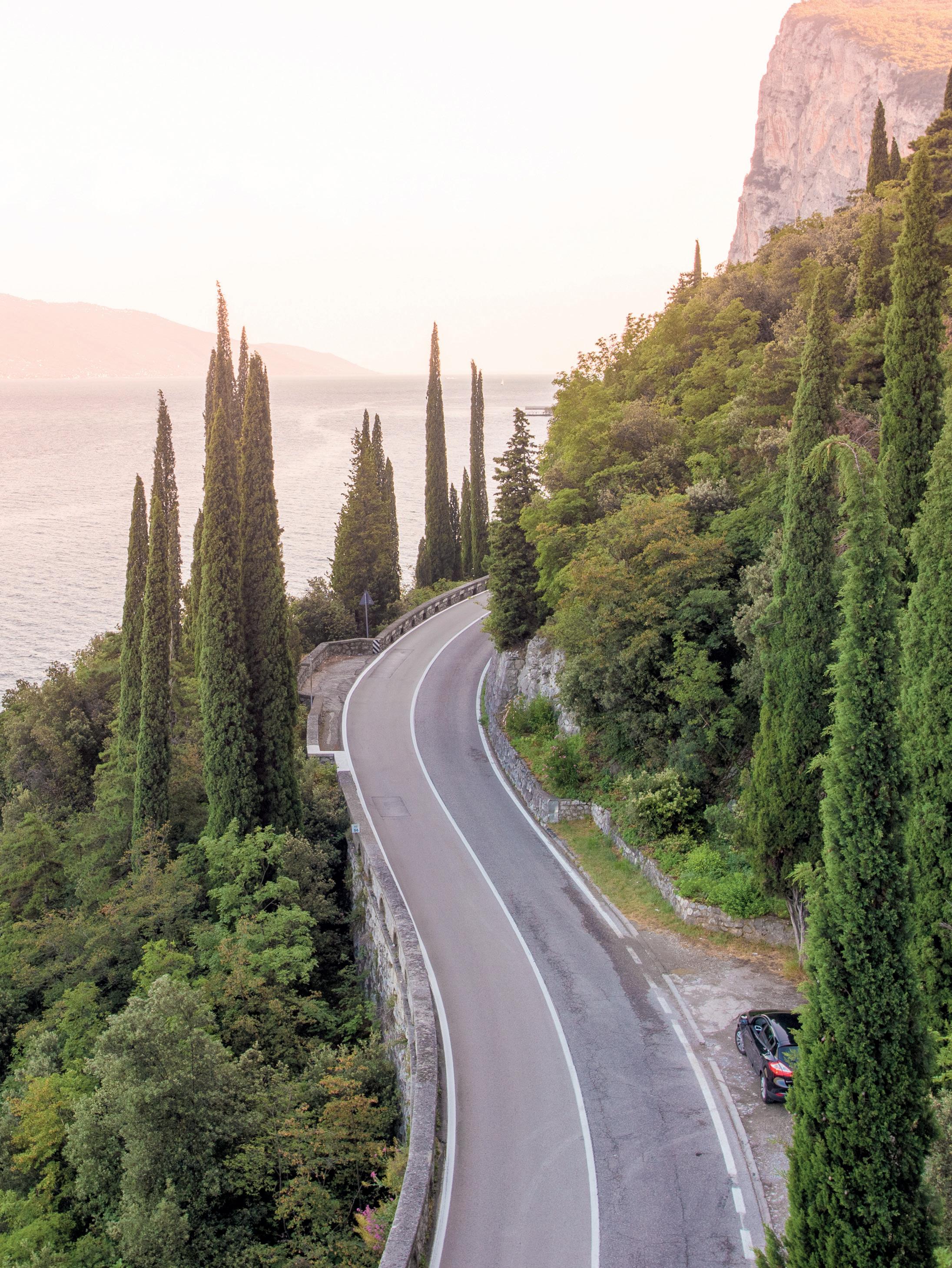
sculptures of flavor. On the enchanted peninsula of Sirmione, La Speranzina Restaurant & Relais, with one Michelin star, offers an unforgettable gourmet experience, where exquisitely refined cuisinemeetstop-tierhospitalityandapanoramic view that is pure magic. On the Veronese shore, in Malcesine, Vecchia Malcesine, creatively guided by Chef Leandro Luppi and awarded one Michelin star, celebrates the authentic flavors of the lake through innovative dishes that highlight their freshness and delicacy, in a charming setting. Finally,nestledinthegentlecountrysideofCavaion Veronese, Oseleta Restaurant, one Michelin star, withinVillaCordevigo,offersaculinaryexperience that skillfully blends the rich tradition of the Veneto region with flashes of innovation, in an environmentofrarebeautyandtranquility.
These places of excellence, precious gems set in the diadem of Lake Garda, along with countless other high-profile establishments across Italy, are the most eloquent testament to how Italian signature cuisine, despite its continuous evolution and constant dialogue with international gastronomic trends, remains profoundly faithful to its core principles: the sacredness of raw ingredients, an almost religious respect for seasonality, the wise balance of the Mediterranean diet, and that inimitable, uniquely Italian ability to transform food into an act of love, culture, and profound humanity. Each dish thus becomes a compelling narrative, each flavor a powerful evocation, confirming the undisputed primacy of a culinary tradition that continues to win over the world with its disarming authenticity, its virtuosity that is never an end in itself, and its timeless, whispered elegance. Experiencing one of these restaurants is not just consuming a meal: it is participating in a ritual, immersing oneself in a beautythatnourishesthebody,elevatesthespirit, andignitesthesoul.
Splendida Villa con Dependance, Piscina e
Bosco
Splendid Villa with Dependance, Pool and Woods

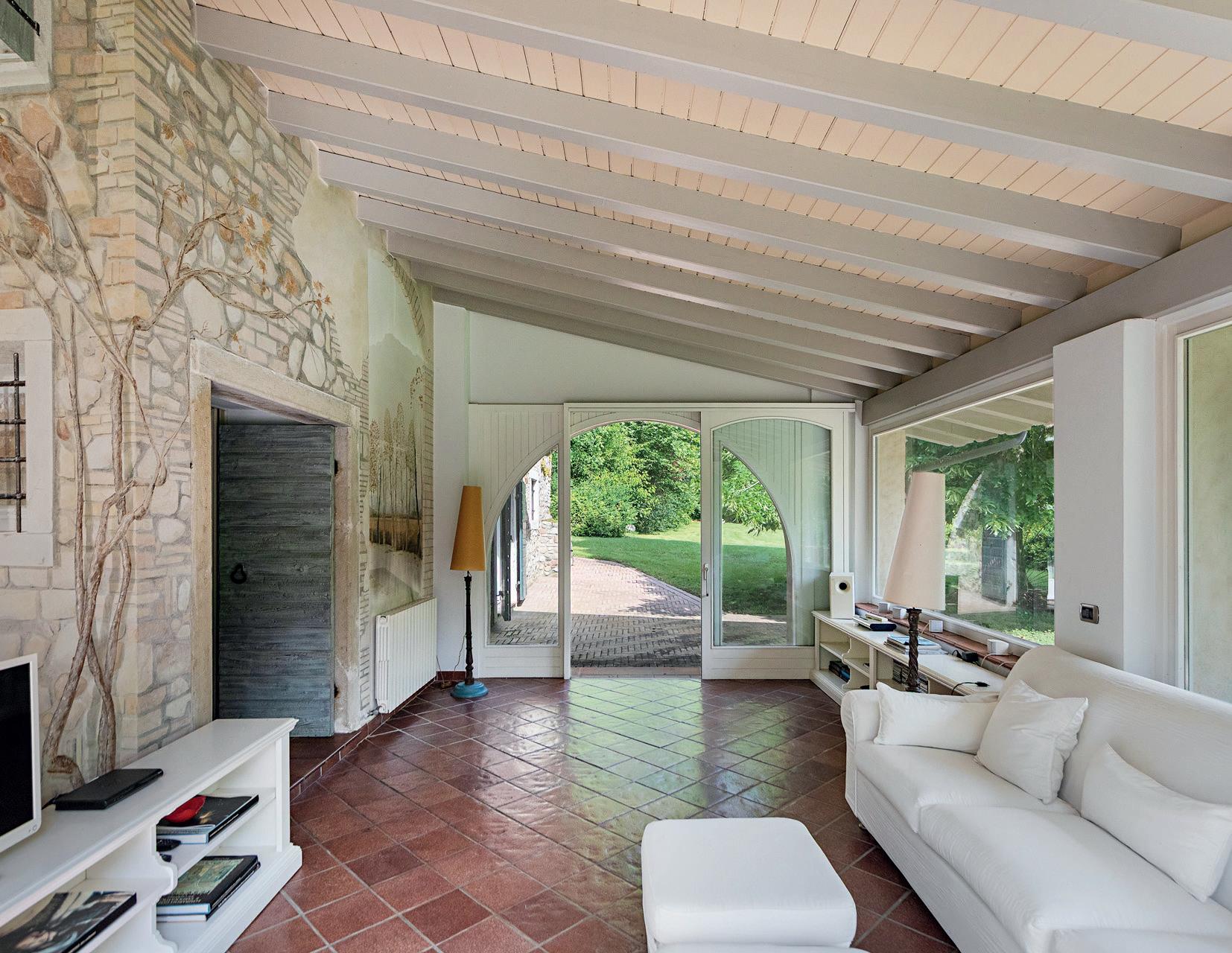



L’Anima Invisibile del Lusso
Un Viaggio alle Radici del Profumo, nel Cuore dell’Arte Profumiera Italiana
TheInvisibleSoulofLuxury: AJourneytotheRootsofFragrance, throughtheHeartofItalianPerfumery

Esiste un tipo di lusso impercettibile ma profondamente sentito: un’architettura invisibile che abita lo spazio tra l’individuo e il mondo. Ha il potere di definire un ricordo, evocare un’assenza, o esprimere una personalità con più forza di qualsiasi tessuto: è l’arte del profumo. Un mestiere antico che ha trovato il suo cuore rinascimentale in Italia e che oggi vive un raffinato rinascimento, opponendosi in silenzio all’omologazione della produzione di massa. Non sono fragranze che gridano, ma sussurrano. Narrazioni liquide che raccontano luoghi, memorie e un ritmo di vita che sfiora il sacro.
There is a kind of luxury imperceptible yet deeply felt—an invisible architecture that permeates the space between the individual and the world. It has the power to define a memory, evoke an absence, or express personality with greater eloquence thananyfabric:itistheartofperfume.Thisancient craft, which found its Renaissance heart in Italy, is nowundergoingarefinedrevival,standinginquiet defiance against mass-produced conformity. Thesearenotfragrancesthatshout—theywhisper. Liquidnarrativesthattellstoriesofplace,memory, andapaceoflifethatfeelsalmostsacred.

La storia del profumo affonda le sue radici nei rituali mistici, negli unguenti divini dell’antico Egitto, e nel fasto delle terme romane. Ma è nel Rinascimento italiano che l’arte del profumare si trasforma in un vero e proprio codice di eleganza e potere, liberandosi dalla sua funzione esclusivamente sacra.
A Firenze in particolare, la bellezza rinascimentale diventa più di un ideale estetico: è misura della virtù, della salute e persino del rango sociale. La leggenda, intrecciata a verità storica, racconta di Caterina de’ Medici che, nel 1533, partì per la Francia per sposare il futuro re Enrico II, portando con sé non solo la sua dote e le forchette, ma anche il suo profumiere di fiducia, Renato Bianco. Ribattezzato René le Florentin, aprì la prima boutique di profumi a Parigi, esportando di fatto il savoir-faire italiano e gettando le basi per quella che sarebbe diventata la capitale mondiale della profumeria.
Thehistoryofperfumeisrootedinmysticalrituals, divine ointments from ancient Egypt, and the opulence of Roman baths. Yet it is in the Italian Renaissance that the art of perfuming becomes a real code of elegance and power, abandoning its exclusivelysacredfunction.
Particularly in Florence, the Renaissance brought a rebirth of beauty which became more than just an aesthetic concept, but a measure of a person’s virtue, health and even social standing. Legend, infused with historical truth, tells of Caterina de’ Medici who, in 1533, left for France to marry the future King Henry II—not only with her dowry and forks, but with her trusted perfumer, Renato Bianco. Renamed René le Florentin, he opened the first perfume boutique in Paris, effectively exporting Italian savoir-faire and laying the foundation for what would have become the world capitaloffragrance.
Ma è nel Rinascimento italiano che l’arte del profumare
si trasforma in un vero e proprio codice di eleganza e potere...
YetitisintheItalianRenaissancethattheartofperfuming becomesarealcodeofeleganceandpower...
Nel frattempo, Venezia — la Serenissima — si affermava come crocevia tra Oriente e Occidente, cuore pulsante del commercio di spezie, resine e fiori esotici. I suoi mercanti introdussero in Europa materie prime preziose come la cannella di Ceylon, il benzoino di Sumatra e il sandalo indiano, che i profumieri locali trasformarono in acque profumate e polveri aromatiche, conservate in flaconi di vetro di Murano: i primi veri oggetti di design legati al mondo del profumo.
Questo passato glorioso non è mai scomparso. Si è semplicemente sedimentato, custodito con cura in piccoli laboratori artigiani e atelier a conduzione familiare, lontani dal ritmo frenetico della produzione industriale. Oggi, assistiamo alla sua magnifica riscoperta. La profumeria artistica italiana contemporanea non è un’industria: è una forma di resistenza culturale. Un atto di ribellione contro la monocultura globale del profumo, uguale da un capo all’altro del pianeta. È, soprattutto, un ritorno all’autenticità, dove il vero lusso non risiede nel marchio, ma nella storia, nella qualità intrinseca delle materie prime, e nella coerenza di una visione.
Un esempio emblematico di questa filosofia è Giardini di Toscana. Nata con l’intento di tradurre in essenze indossabili la memoria olfattiva dei giardini fiorentini, questa maison incarna l’eredità medicea in un linguaggio contemporaneo. Le loro
Meanwhile, Venice “the Serenissima”, gateway to the East, became the epicenter of the spice, resin, and exotic flowers trade. Its merchants introduced precious raw materials to Europe— Ceylon cinnamon, Sumatran benzoin, Indian sandalwood—which local perfumers transformed intoexquisitewatersandfragrantpowders,stored in Murano glass bottles, the first true design objectslinkedtotheworldoffragrance.
This glorious past has never vanished. It has settled quietly, preserved in small workshops and family-run ateliers, far from the frenetic pace of industrial production. Today, we witness its magnificent rediscovery. Contemporary Italian artisticperfumeryisnotanindustry—itisacultural resistance.Arebellionagainsttheglobalfragrance monoculture, identical from one side of the planet to the other. Above all, it is a return to authenticity, where true luxury lies not in the brand but in the story, the intrinsic quality of the material, and the coherence of a vision.
An emblematic example of this philosophy is Giardini di Toscana. Born from the vision of translating the olfactory memory of Florentine gardens into wearable essences, this maison embodies Medici heritage in a contemporary language.Theircreationsarenotmereperfumes— they are liquid landscapes. Closing one’s eyes and

creazioni non sono semplici profumi, ma paesaggi liquidi. Chiudere gli occhi e spruzzare una loro fragranza equivale a passeggiare in un giardino segreto di Boboli dopo un temporale estivo: l’odore umido della terra si mescola al tiglio in fiore e alle statue coperte di muschio.
Se Giardini di Toscana offre una reinterpretazione moderna di questo Eden olfattivo, esiste un luogo dove il tempo sembra essersi fermato: un tempio che rappresenta le radici stesse della profumeria europea — l’Officina Profumo-Farmaceutica di Santa Maria Novella. Fondata dai frati domenicani nel 1221, è una delle farmacie più antiche del mondo. Le sue preparazioni, basate su formule secolari e ingredienti botanici, sono un ponte vivente verso la storia. Indossare la loro “Acqua della Regina”, creata proprio per Caterina de’ Medici, è un’esperienza culturale: un dialogo diretto con il Rinascimento.
Dal cuore della Toscana il viaggio prosegue verso un’isola sospesa nel blu — Capri — dove il profumo è intimamente legato alla flora mediterranea. È qui che nasce Carthusia Profumi di Capri. La leggenda racconta che nel 1380 il priore della Certosa di San Giacomo preparò un’acqua floreale per la regina Giovanna d’Angiò. Secoli dopo, quelle formule furono riscoperte, dando vita a una maison che distilla l’essenza stessa dell’isola.
spraying one of their fragrances feels like strolling through a secret garden in Boboli after a summer storm, the damp scent of earth blending with bloominglindentreesandmoss-coveredstatues.
While “Giardini di Toscana” offers a modern reinterpretation of this olfactory Eden, there is a place where time seems to have stood still—a temple that represents the very roots of European perfumery: the “Officina Profumo-Farmaceutica di Santa Maria Novella”. Founded by Dominican friars in 1221, it is one of the oldest pharmacies in the world. Its preparations, based on centuriesold formulas and botanical ingredients, are a livingbridgetohistory.Wearingtheir“Acquadella Regina”, created for Catherine de’ Medici herself, isaculturalexperience—adirectdialoguewiththe Renaissance.
From the cradle of the Renaissance, this olfactory journey takes us to an island suspended in blue—Capri—where scent is intimately tied to Mediterranean flora. And it’s just here that “Carthusia Profumi di Capri” was born. Legend has it that in 1380, the Prior of the Certosa di San Giacomo created a floral water for Queen Joanna of Anjou. Centuries later, those formulas were rediscovered, giving life to a maison that distills the island’s very essence. Their fragrances are an immersion into notes of citrus, wild fig, and
Le sue fragranze sono immersioni nei sentori di agrumi, fichi selvatici e garofani capresi: un lusso intriso di sole, vento e mare.
Se Firenze e Capri parlano di tradizione botanica e leggende, Torino risponde con una visione che unisce opulenza e arte: Xerjoff. Questa maison di profumeria artistica si distingue per la complessità delle sue composizioni e per la preziosità delle materie prime, spesso racchiuse in flaconi che sono vere e proprie opere d’arte scultorea. Xerjoff fonde la maestria artigiana italiana con uno stile universale di eleganza, creando profumi opulenti e raffinati diventati un punto di riferimento per intenditori in tutto il mondo.
E poi c’è la narrazione più intima e poetica, incarnata da Meo Fusciuni, alchimista nomade che definisce i suoi profumi “viaggi liquidi”. Farmacista di formazione, appassionato di botanica e antropologia, le sue creazioni nascono da viaggi reali e interiori. Ogni profumo è un
Capresecarnations—aluxurysteepedinsun,wind, and sea.
While Florence and Capri tell a story of botanical tradition and legend, Turin responds with a vision that fuses opulence and artistry: “Xerjoff”. This maison of artistic perfumery stands out for the complexity of its compositions and the preciousnessofitsrawmaterials,oftenenclosedin bottles that are true sculptural art works. “Xerjoff” blends Italian artisanal mastery with universal style of elegance, creating opulent and refined fragrances that have become a benchmark for connoisseurs around the world.
And then there is the most intimate and poetic narrative,embodiedby“MeoFusciuni”,anomadic alchemist who defines his perfumes as “liquid journeys.” A trained pharmacist with a deep passionforbotanyandanthropology,hiscreations are distilled from both real and inner travels. Each fragrance is a triptych: olfactory pyramid, poetry,



trittico: piramide olfattiva, poesia e fotografia. Un’esperienza sinestetica che eleva il profumo a forma d’arte totale.
Questa nuova generazione di artigiani del profumo condivide un valore fondamentale: la sostenibilità non è un’etichetta di marketing, ma il fondamento stesso del loro lavoro. È la scelta consapevole di utilizzare alcool di origine vegetale, filiere corte, collaborazioni con piccoli produttori locali e packaging riciclabili, riutilizzabili o ricaricabili. Non è solo un gesto ecologico, ma una dichiarazione d’intenti: oggi, il lusso deve essere responsabile, o non è lusso. È un rifiuto dell’opulenza vuota in favore di un’eleganza consapevole — un’eleganza che comprende il valore degli ingredienti e rispetta il mondo da cui provengono.
Il lusso, allora, non è più l’oro liquido dentro una bottiglia, ma il tempo, la memoria e la cultura che i profumi sanno conservare. È l’anima invisibile di un savoir-faire che, silenziosamente, continua a rendere l’Italia un’emozione da indossare.
and photography. It is a synesthetic experience thatelevatesperfumetoatotalartform.
This new wave of perfume artisans shares a fundamentalvalue:sustainabilityisnotamarketing label, but the very foundation of their existence. It is the conscious choice to use biologically derived alcohol, favor short supply chains, collaborate with small local growers, and design recyclable, reusable, or refillable packaging. This is not just anecologicalact—itisacleardeclarationofintent: today,luxurymustberesponsible,oritisnotluxury. It is meant tlo be a rejection of empty opulence in favor of conscious elegance—an elegance that understands the value of ingredients used and respectstheworldtheyaresourcedfrom.
Luxury, then, is no longer the liquid gold inside a bottle, but the time, the memory, and the culture thatfragrancescanpreserve.Itistheinvisiblesoul of a savoir-faire that, silently, continues to make Italyanemotiononecanwear.


Geometrie di Silenzio
L’Arte Alchemica del Metodo Classico in Franciacorta
GeometriesofSilence:TheAlchemicalArt oftheClassicMethodinFranciacorta
Viviamo in un’epoca di istantaneità. La tecnologia ci ha abituati a una gratificazione istantanea, basata su una comunicazione più veloce del pensiero e simile a un rapido corso d’acqua che, ahimè, non trasporta molti sedimenti. In un simile contesto, il tempo stesso è diventato una merce, un’entità da ottimizzare, comprimere e accelerare. Eppure, esistono luoghi immuni a questa frenesia... oasi di resistenza dove il tempo non è un avversario da battere, ma l’ingrediente più prezioso, un alleato da rispettare e custodire. Uno di questi luoghi è la Franciacorta, terra celebre per i suoi rinomati vini. Qui, tra le colline moreniche modellate da antichi ghiacciai, si compie un rito che è l’esatta antitesi della nostra era: la creazione del grande Metodo Classico.
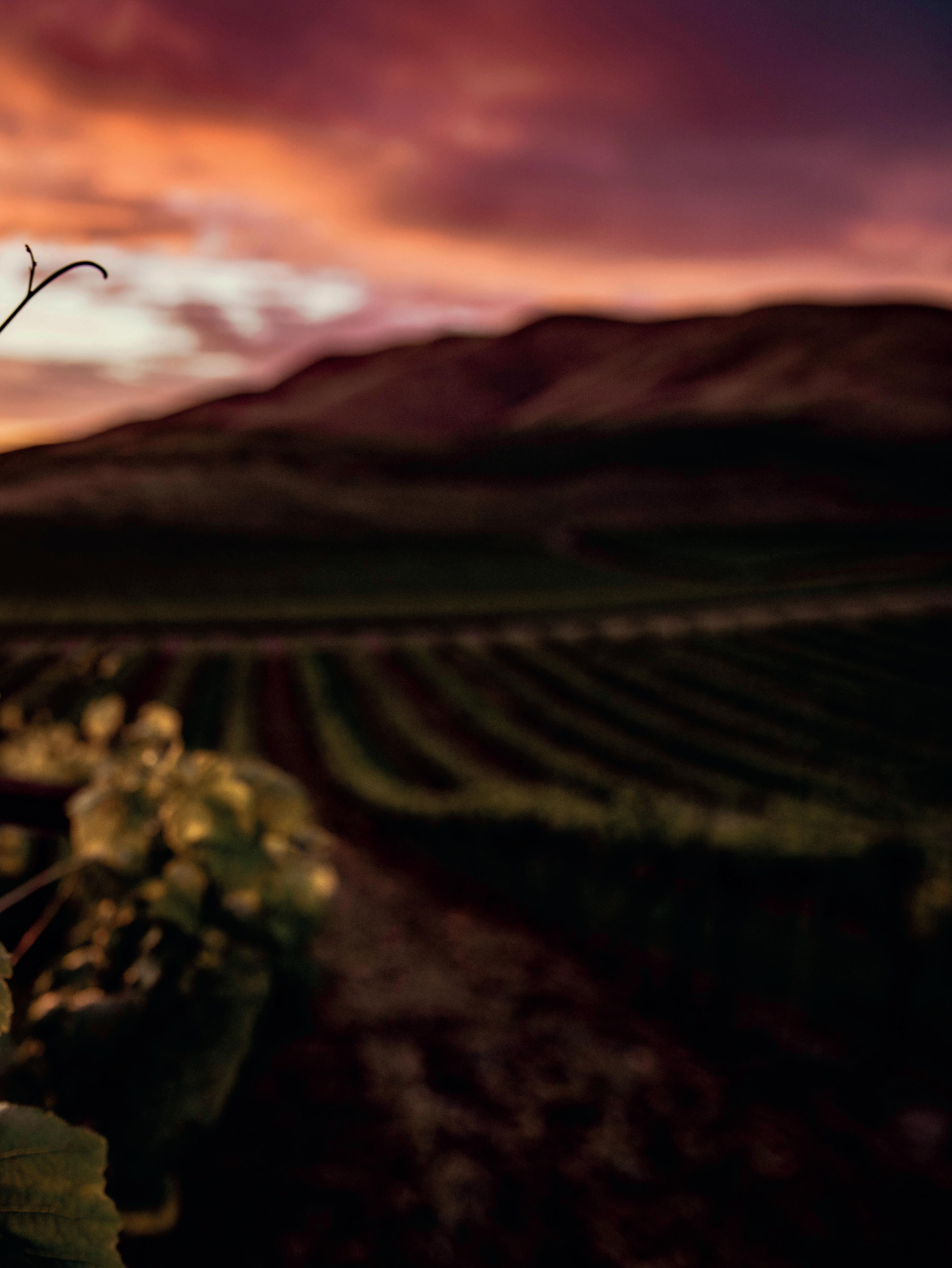
In an Age of Immediacy and Impatience, some people have no problem waiting. Technology has accustomed us to instant gratification based on communication faster than the speed of thought and similar to rapid water flow that, alas, doesn’t carry much sediment. In such a current situation, time itself has become a commodity, an entity to be optimized, compressed, and accelerated. And yet,thereareplacesimmunetothisfrenzy…oases of resistance where time is not an adversary to be beaten,butthemostpreciousingredient,anallyto be respected and cherished. One of these places is Franciacorta, a land famous for its renowned wines Here, among the morainic hills shaped by ancient glaciers, a ritual is performed that is the exactantithesisofourera:thecreationofthegreat MetodoClassico(Champenoise).
Geometrie di Silenzio

Questo articolo non tratterà di note di degustazione, perlage o abbinamenti. Parlerà di silenzio, pazienza e gesti. Per capire bisogna lasciarsi alle spalle la luce del sole che indora i filari di Chardonnay e Pinot Nero e varcare la soglia di una cantina storica. L’aria si fa subito più fresca, più densa, intrisa del profumo di pietra umida, di terra e di un aroma nobile, quasi di panificazione, che emana dalle cataste di bottiglie addormentate. Sono vere e proprie cattedrali sotterranee, architetture del silenzio dove il mondo esterno, con il suo frastuono, non è ammesso. In questa penombra, migliaia di bottiglie riposano su griglie metalliche o sono adagiate su pupitre di legno, i tradizionali cavalletti a “V” che le sorreggono come in una culla. Sono geometrie perfette, un esercito immobile in attesa di un ordine che arriverà solo dopo anni.
Qui il tempo non si misura in ore o giorni, ma in mesi, stagioni e lustri. Ogni bottiglia è un universo sigillato al cui interno si compie una lenta e meravigliosa alchimia. Dopo la prima fermentazione, il vino base, unito a zuccheri e lieviti selezionati, viene imbottigliato e messo a riposo. Inizia così la “presa di spuma”, una seconda, segreta fermentazione che avviene all’interno del vetro. I lieviti lavorano, trasformando lo zucchero in alcol e anidride carbonica, creando quella magica pressione che un giorno si libererà in milioni di bollicine finissime. Ma il loro compito non è finito. Una volta esaurita la loro forza vitale, si depositano
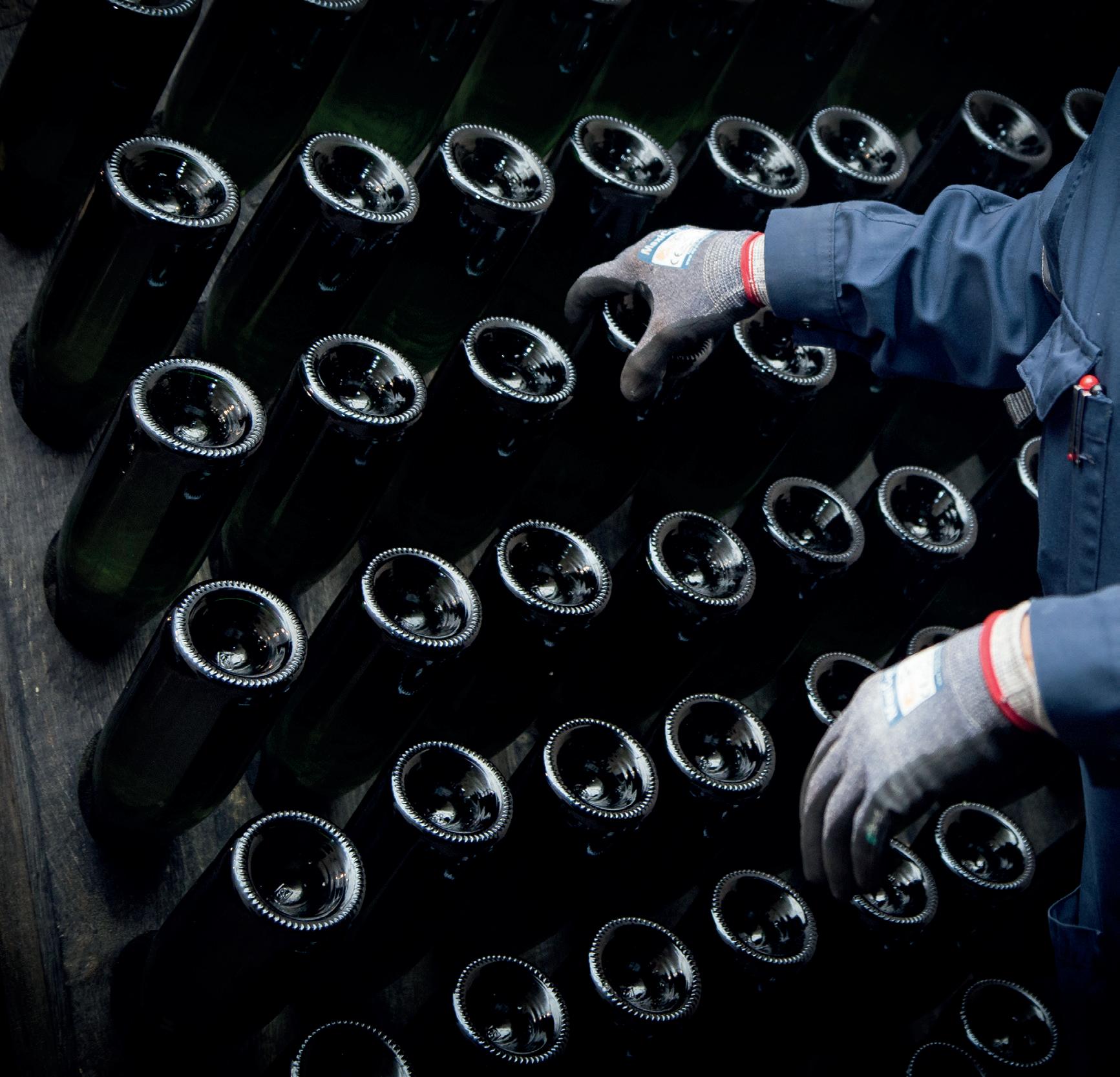
Thisarticlewillnotdealwithtastingnotes,perlage or pairings. It will talk about silence, patience, and gesture. To understand you have to leave behind thesunlightthatgildstherowsofChardonnayand Pinot Noir and cross the threshold of a historic cellar.Theairimmediatelybecomescooler,denser, imbued with the scent of damp stone, earth, and a noble, almost bready aroma emanating from the stacks of sleeping bottles. These are true subterranean cathedrals, architectures of silence where the outside world, with its noise, is not permitted. In this half-light, thousands of bottles rest on metal grids or are nestled in wooden pupitres, the traditional A-frame racks that hold themasifinacradle.Theyareperfectgeometries, a motionless army awaiting an order that will only comeafteryears.
Here, time is not measured in hours or days, but in months, seasons, and lustrums. Each bottle is a sealed universe wherein a slow and marvelous alchemy is taking place. After the first fermentation, the base wine, combined with selected sugars and yeasts, is bottled and laid to rest. Thus begins the presa di spuma, a second, secret fermentation that occurs within the glass. The yeasts work, transforming sugar into alcohol andcarbondioxide,creatingthemagicalpressure that will one day be released in millions of fine bubbles. But their task is not finished. Once their life force is exhausted, they settle at the bottom, becoming the wine’s greatest treasure: its very
sul fondo, diventando il più grande tesoro del vino: la sua anima. Per mesi, a volte per anni, il vino matura “sui lieviti ”, nutrendosi della loro complessità, arricchendosi di profumi, struttura e profondità. È un processo di autolisi, un’eredità che i lieviti lasciano al vino prima di congedarsi.
E la loro dipartita è un rito di una bellezza quasi coreografica: il remuage. In un angolo della cantina, lontano da occhi indiscreti, incontriamo uno degli ultimi maestri di quest’arte, uno chef de cave che da quarant’anni compie gli stessi gesti. Le sue mani, nodose ma agili, afferrano una bottiglia dalla pupitre. Con un movimento secco e preciso, quasi un colpo di polso, la ruota di un ottavo di giro e la inclina leggermente di più verso la verticale. Un piccolo segno di gesso sul fondo della bottiglia è la sua unica bussola. Lo fa per centinaia, migliaia di bottiglie, ogni giorno, per settimane. È un dialogo muto e intimo, una danza lenta con uno scopo preciso: far scivolare i sedimenti verso il collo
soul. For months, sometimes for years, the wine matures sui lieviti (on the lees), feeding on their complexity,enrichingitselfwitharomas,structure, anddepth.Itisaprocessofautolysis,alegacythat the yeasts leave to the wine before taking their leave.
And their departure is a ritual of almost choreographic beauty: the remuage. In a corner of the cellar, away from prying eyes, we meet one of the last masters of this art, a chef de cave who has been performing the same gestures for forty years. His hands, gnarled but nimble, grasp a bottle from the pupitre. With a sharp, precise movement, almost a flick of the wrist, he rotates it an eighth of a turn and tilts it slightly more toward the vertical. A small chalk mark on the bottom of the bottle is his only compass. He has been doing this for hundreds, thousands of bottles, every day, forweeks.Itisamuteandintimatedialogue,aslow dance with a precise purpose. Bottles are placed

della bottiglia, pronti per essere espulsi con la sboccatura (dégorgement).
Osservarlo è ipnotico. Non c’è sforzo, solo una sapienza ancestrale nel suo gesto. Oggi molte cantine utilizzano macchinari computerizzati, i giropallet, che svolgono questo lavoro in modo efficiente. Ma il remuage a mano conserva una sacralità, una dimensione umana che nessuna macchina potrà mai replicare. È la prova tangibile che dietro un grande Franciacorta non c’è solo una tecnica, ma una cultura, una dedizione personale.
Questo è il vero lusso della Franciacorta. Non risiede nel valore economico, ma nella ricchezza del tempo dedicato e nell’arte quasi monastica di saper attendere.
Quando, finalmente, una bottiglia di Franciacorta viene stappata, quel suono non è solo un segnale di festa. È il respiro della cantina che si libera. È il suono di anni di silenzio che tornano alla luce.
upside down and gradually turned and tilted to move the sediment towards the neck of the bottle,readytobeexpelledwiththedisgorgement (dégorgement).
Watching him is hypnotic. There is no effort, only an ancestral wisdom in his gesture. Today, many wineries use computerized machines, the giropallet, performing this work efficiently. But the remuage by hand preserves a sacredness, a human dimension that no machine can ever replicate. It is tangible proof that behind a great Franciacorta, there is not just a technique, but a culture,apersonaldedication.
This is the true luxury of Franciacorta. It does not lie in the economic value, but in the richness of the time dedicated and in the almost monastic art of patientlywaiting.
When, at last, a bottle of Franciacorta is uncorked, that sound is not just a sign of celebration. It is the breath of the cellar being released. It is the sound ofyearsofsilencecomingtolight.
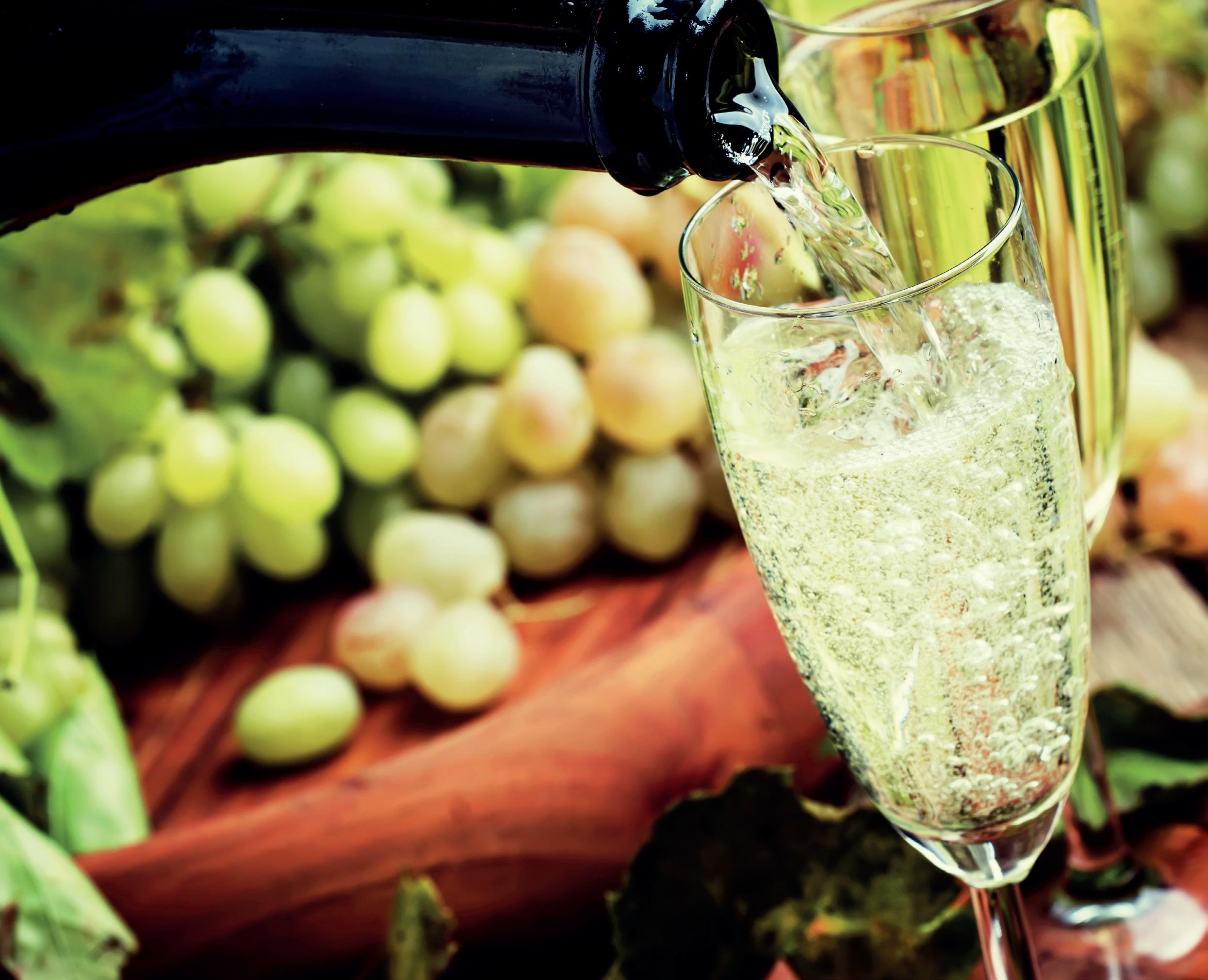
GH Luxury Estate
Che siate alla ricerca di una residenza capace di emozionarvi o pronti a valorizzare al meglio il vostro immobile di prestigio, GH Luxury Estate è il partner ideale per accompagnarvi in questo percorso.
Siamo nati per dare voce al lusso autentico, quello che vive nei dettagli, nell’unicità di ogni proprietà e nell’esperienza su misura che offriamo a chi si affida a noi. La nostra filosofia si fonda su tre pilastri semplici e solidi: fiducia, trasparenza e ascolto.
Con una selezione curata di dimore d’eccellenza in luoghi straordinari, GH Luxury Estate è sinonimo di competenza, riservatezza e visione. Ogni progetto nasce da un dialogo: comprendere profondamente chi ci sceglie è il primo passo per costruire un servizio davvero personalizzato.
Il nostro team è composto da professionisti appassionati, preparati a gestire ogni fase della compravendita con discrezione e precisione. Utilizziamo strategie integrate – digitali e tradizionali – per garantire a ogni immobile la massima visibilità, raggiungendo il pubblico giusto, nel modo giusto.
Non siamo solo intermediari: siamo interpreti di un certo stile di vita. E ogni interazione con noi è pensata per farvi sentire al centro di un’esperienza straordinaria.
GH Luxury Estate. Italian properties, timeless stories.
Whether you’re looking for a residence that truly moves you, or you’re ready to enhance the value of yourprestigiousproperty,GHLuxuryEstateisyour trustedpartnerthroughoutthejourney.
We were born to express authentic luxury—the kind that lives in the details, in the uniqueness of each property,andinthetailoredexperiencewecreatefor every client. Our philosophy rests on three essential pillars:trust,transparency,andattentivelistening.
With a carefully curated selection of exceptional homesinextraordinarylocations,GHLuxuryEstate stands for expertise, discretion, and vision. Every project begins with a dialogue: understanding our clients deeply is the first step in creating a truly bespokeservice.
Our team is made up of passionate professionals, ready to manage every phase of the buying or selling process with precision and confidentiality. We use an integrated approach—blending digital and traditional strategies—to give each property maximum visibility, reaching the right audience, in therightway.
We’re not just brokers—we’re interpreters of a lifestyle. And every interaction with us is designed to make you feel at the heart of an extraordinary experience.
GH Luxury Estate. Italian properties, timeless stories.
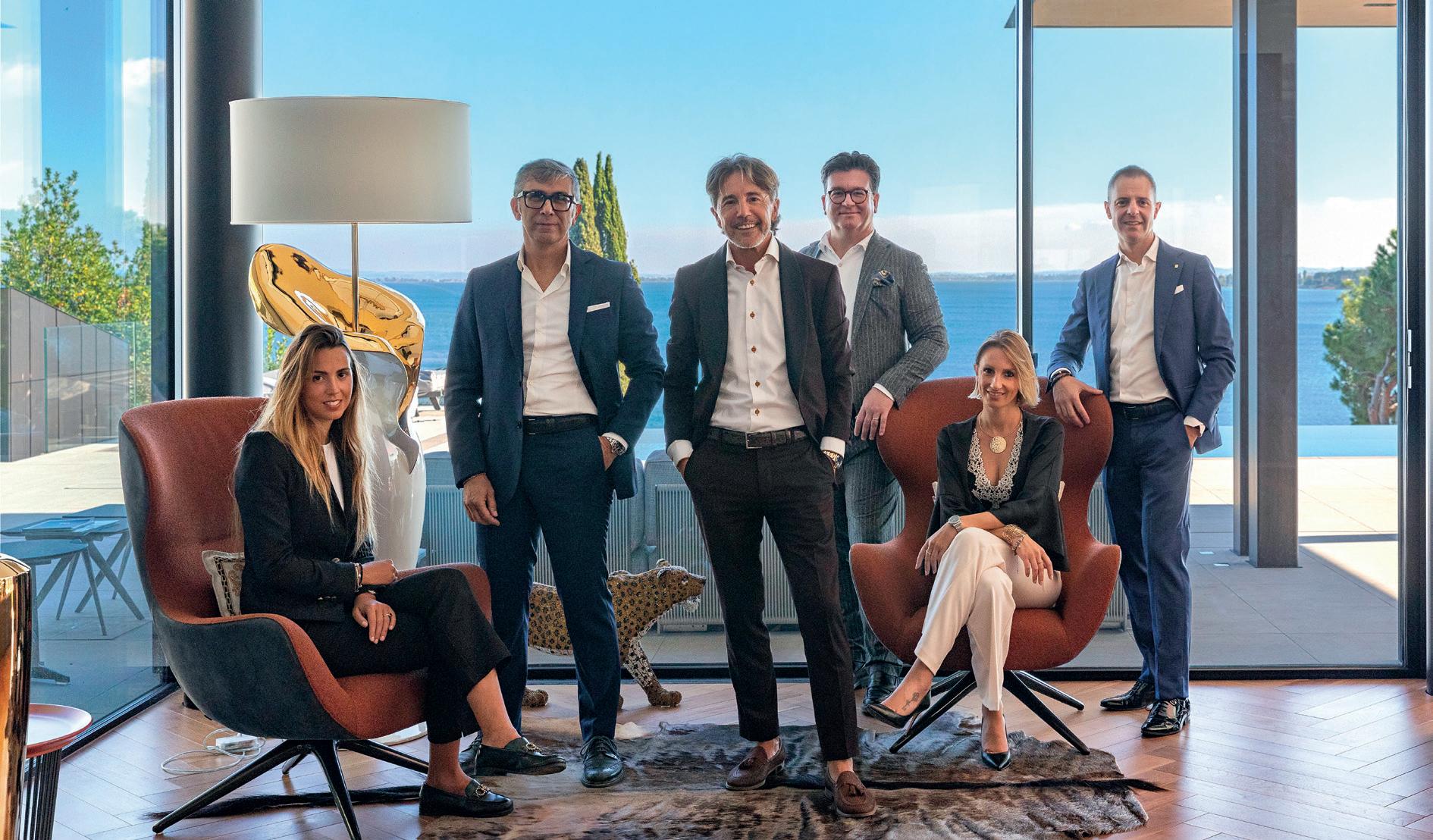
GH Luxury Agencies
PORTO CERVO
Via della Marina, Loc. Porto Cervo 07020 Arzachena (SS) portocervo@ghluxury.com
DUBAI
568P +R7C Rooftop Offices MSM 2 Building Dubai dubai@ghluxury.com
MIAMI
Uptown Ava unit 310 Boca Raton Florida USA 33428 miami@ghluxury.com
LAGO DI GARDA
Via Colombare 46/48 25019 Sirmione (BS) info@ghluxury.com
LAGO DI ISEO
Via Roma 50 25049 Iseo (BS) iseo@ghluxury.com
LAGO DI COMO
Via IV Novembre 28 22017 Menaggio (CO) como@ghluxury.com
TOSCANA
Viale V. Alfieri 28 50121 Firenze (FI) toscana@ghluxury.com
TRENTO
Via del Commercio 36Q 38121 Trento (TN) trento@ghluxury.com
OTHER LOCATIONS
Via Meucci 77 b 25080 Padenghe s/G (BS) info@ghluxury.com
